on view: Hong Hong
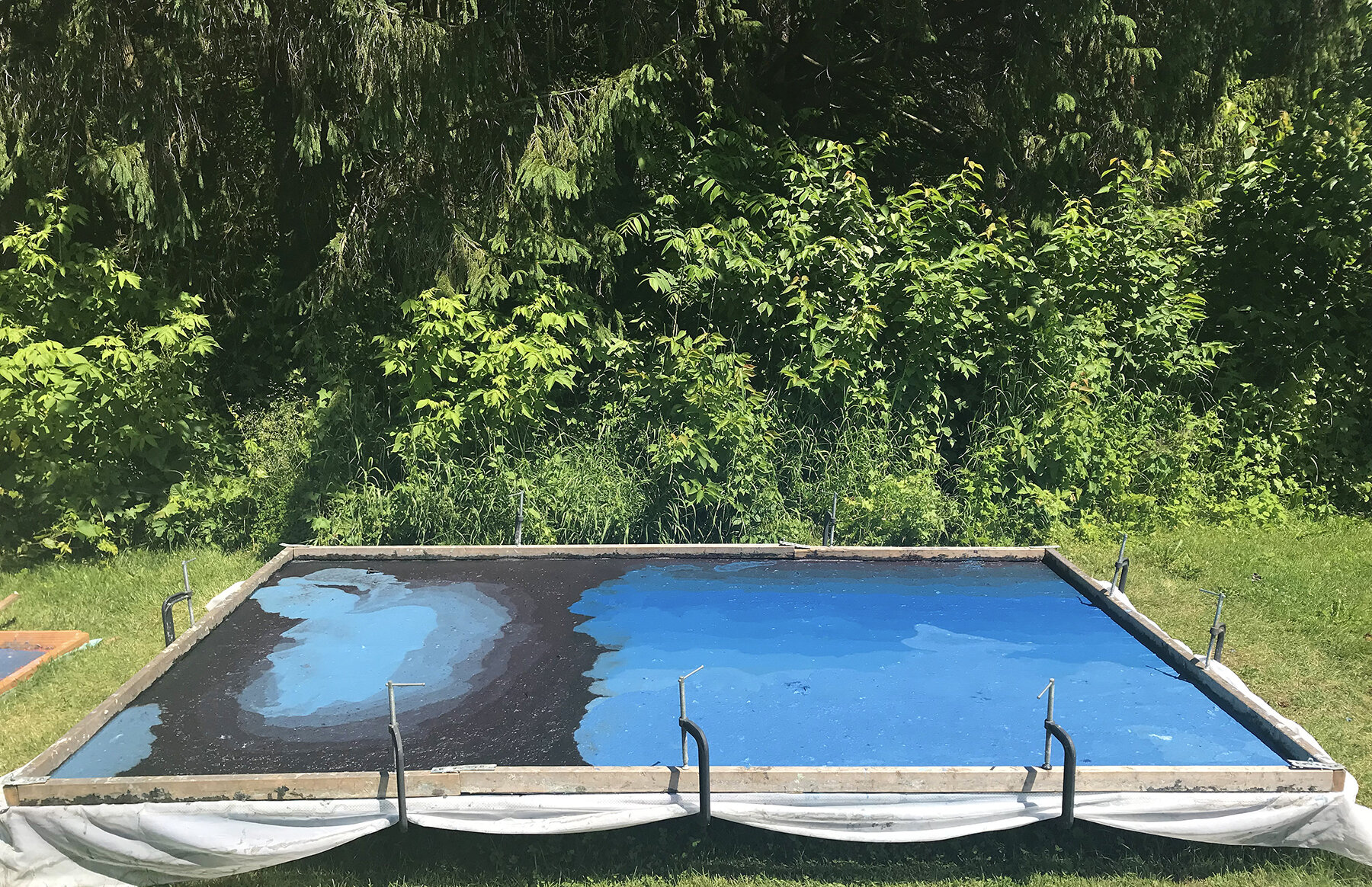
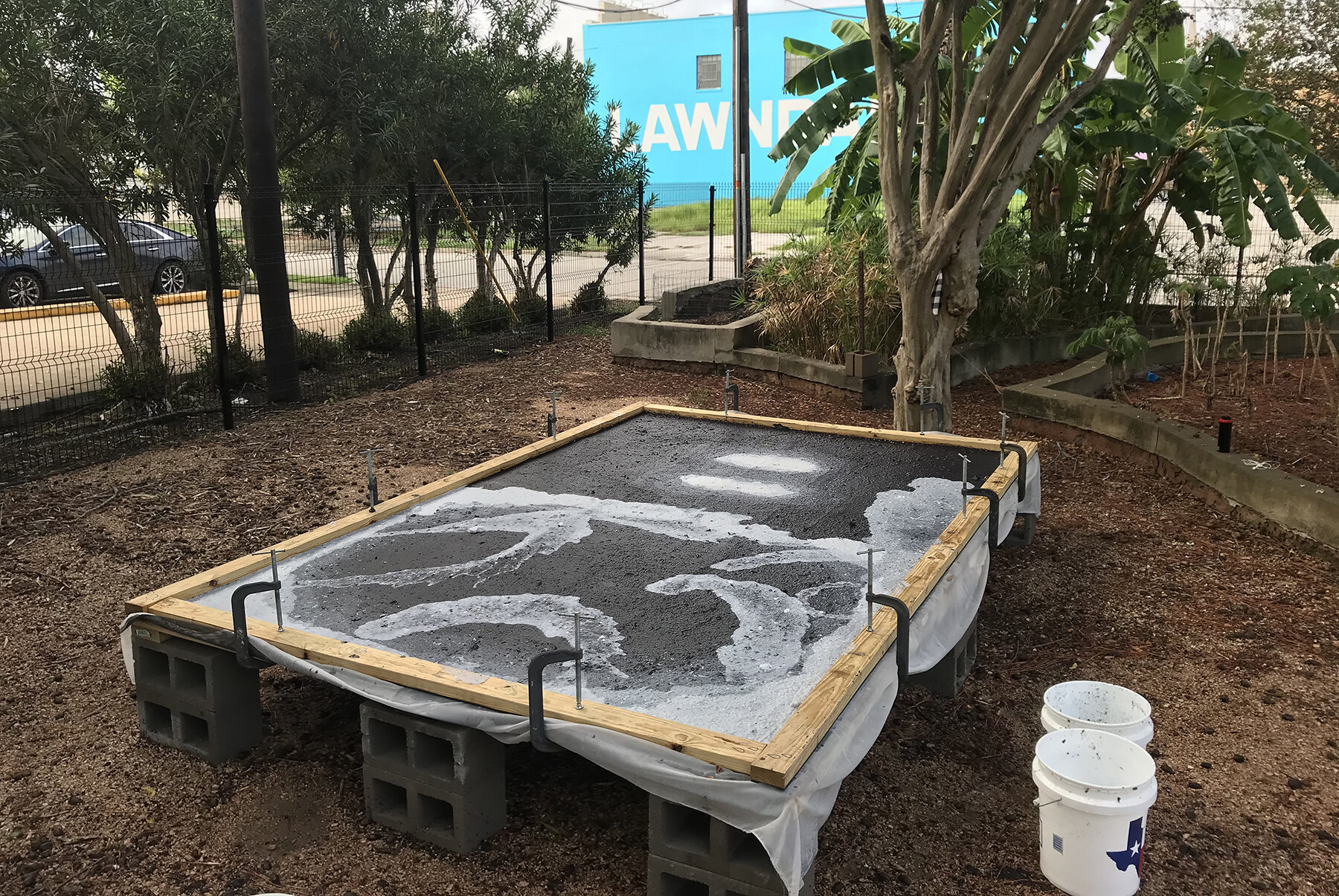
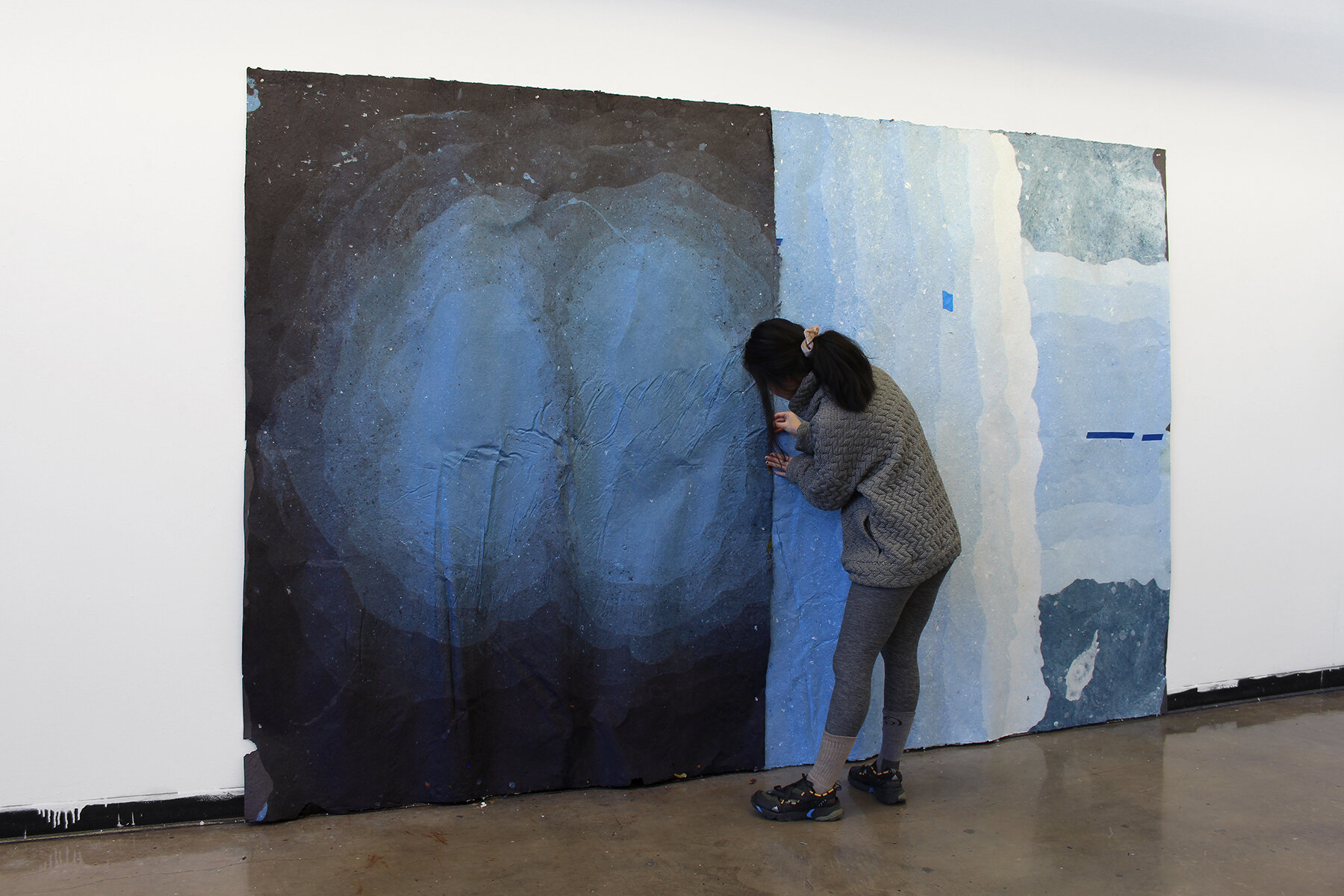
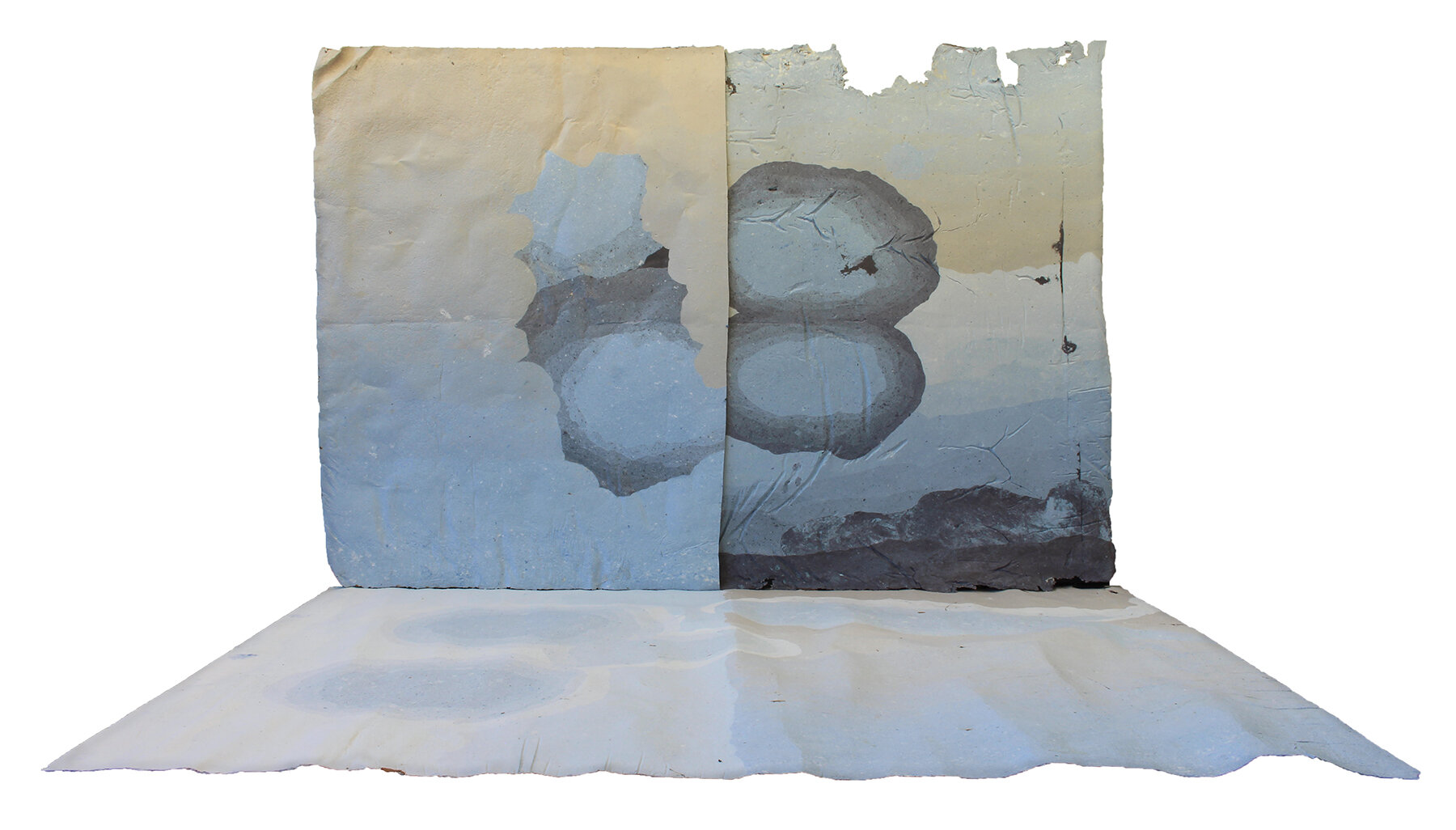
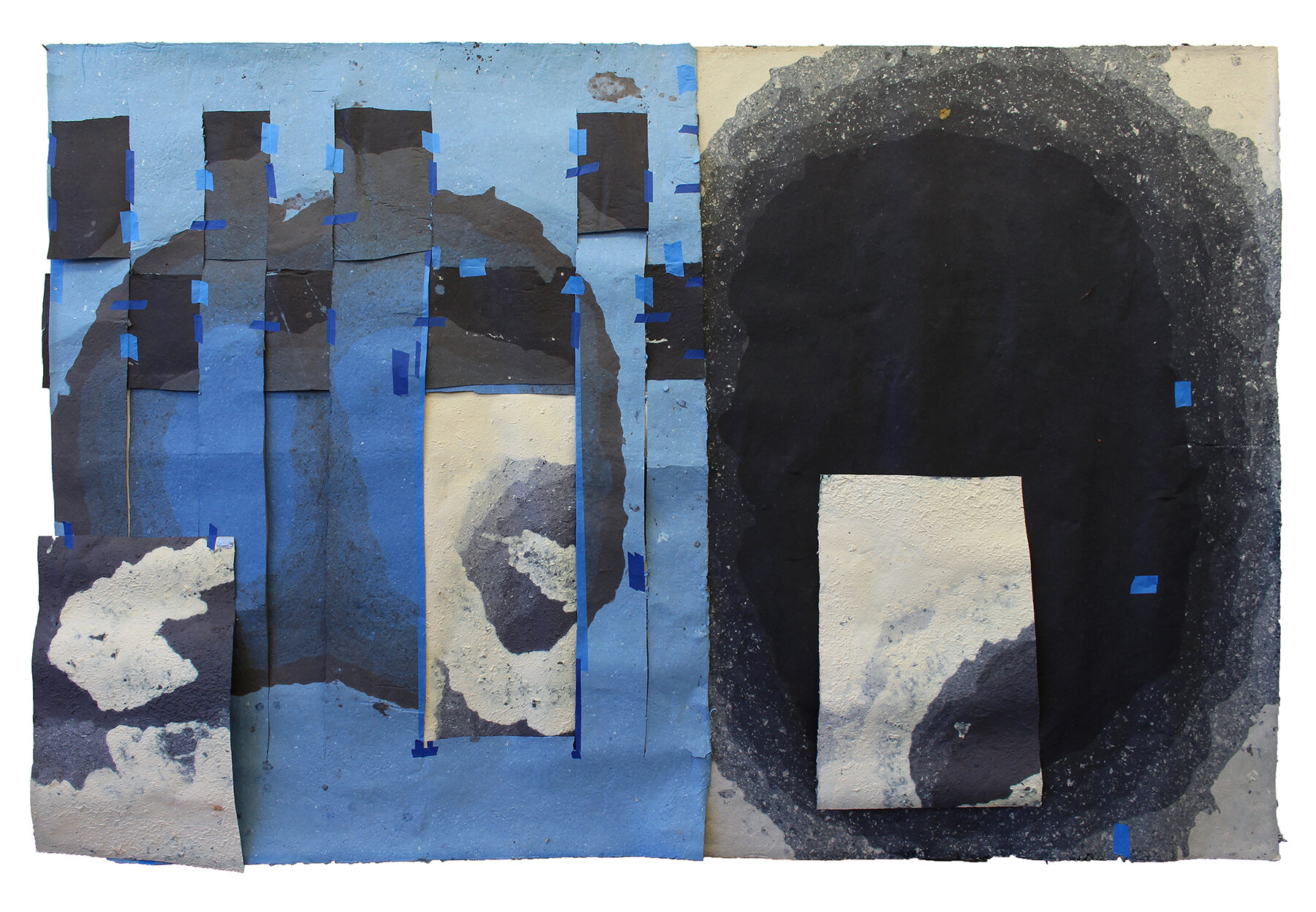
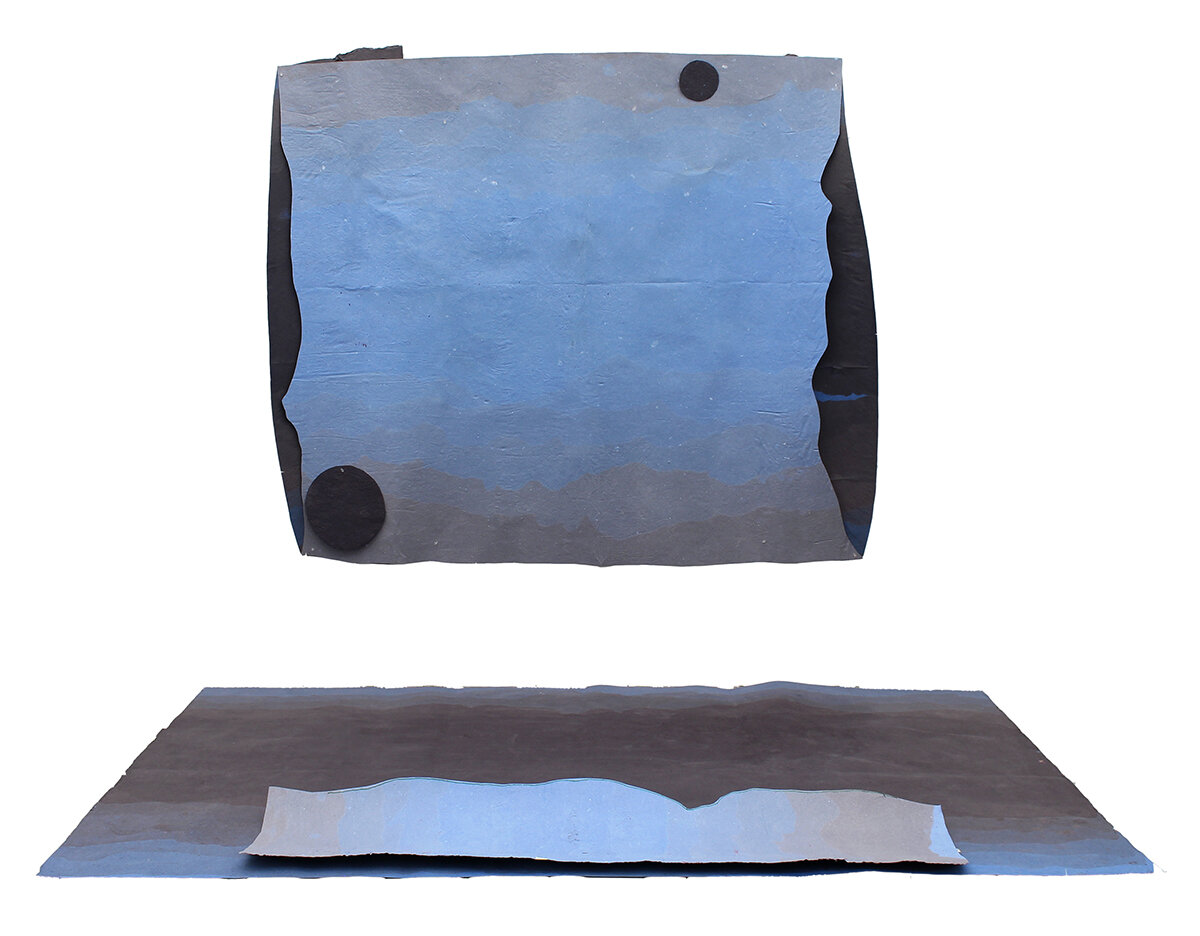

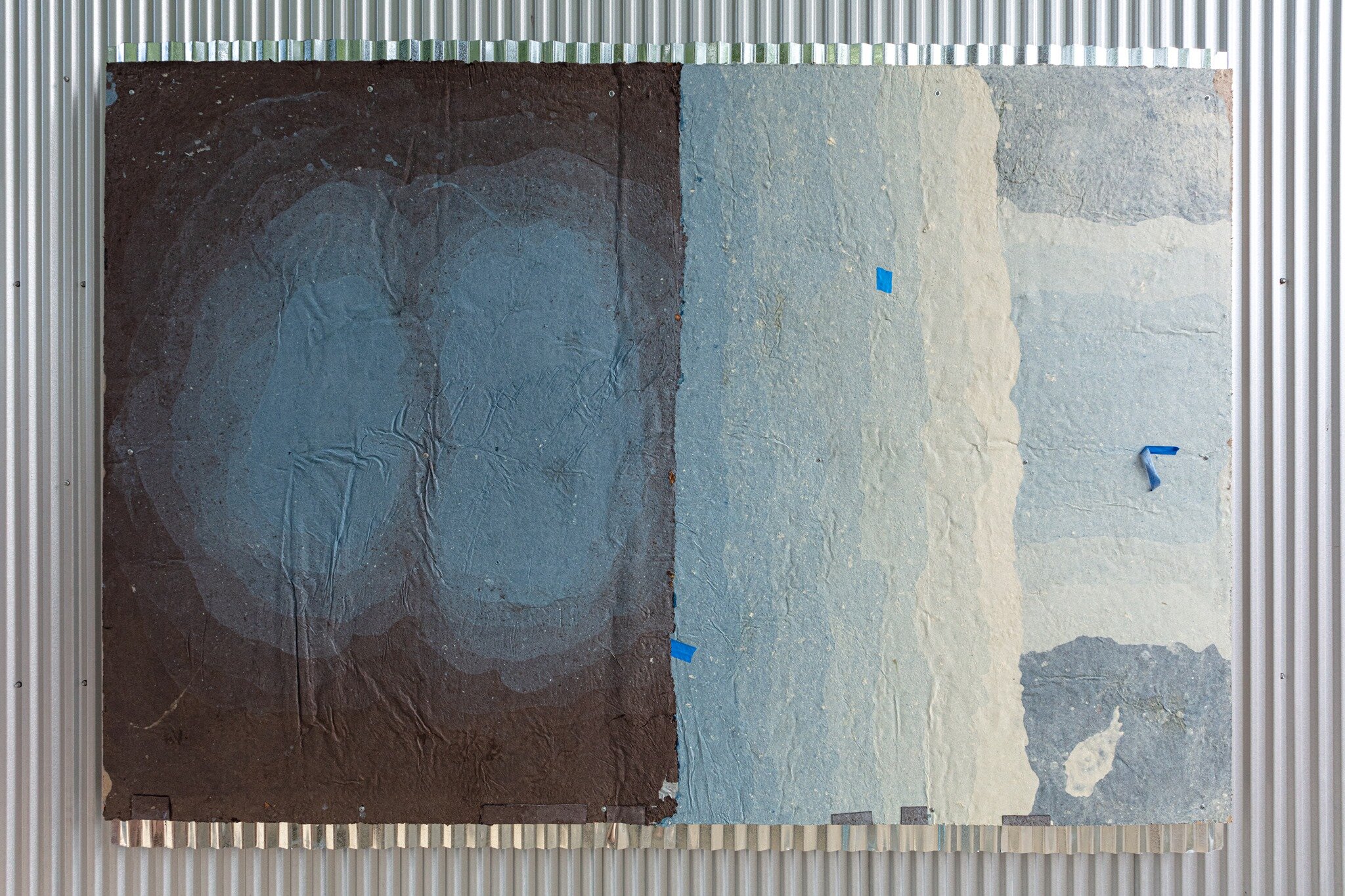
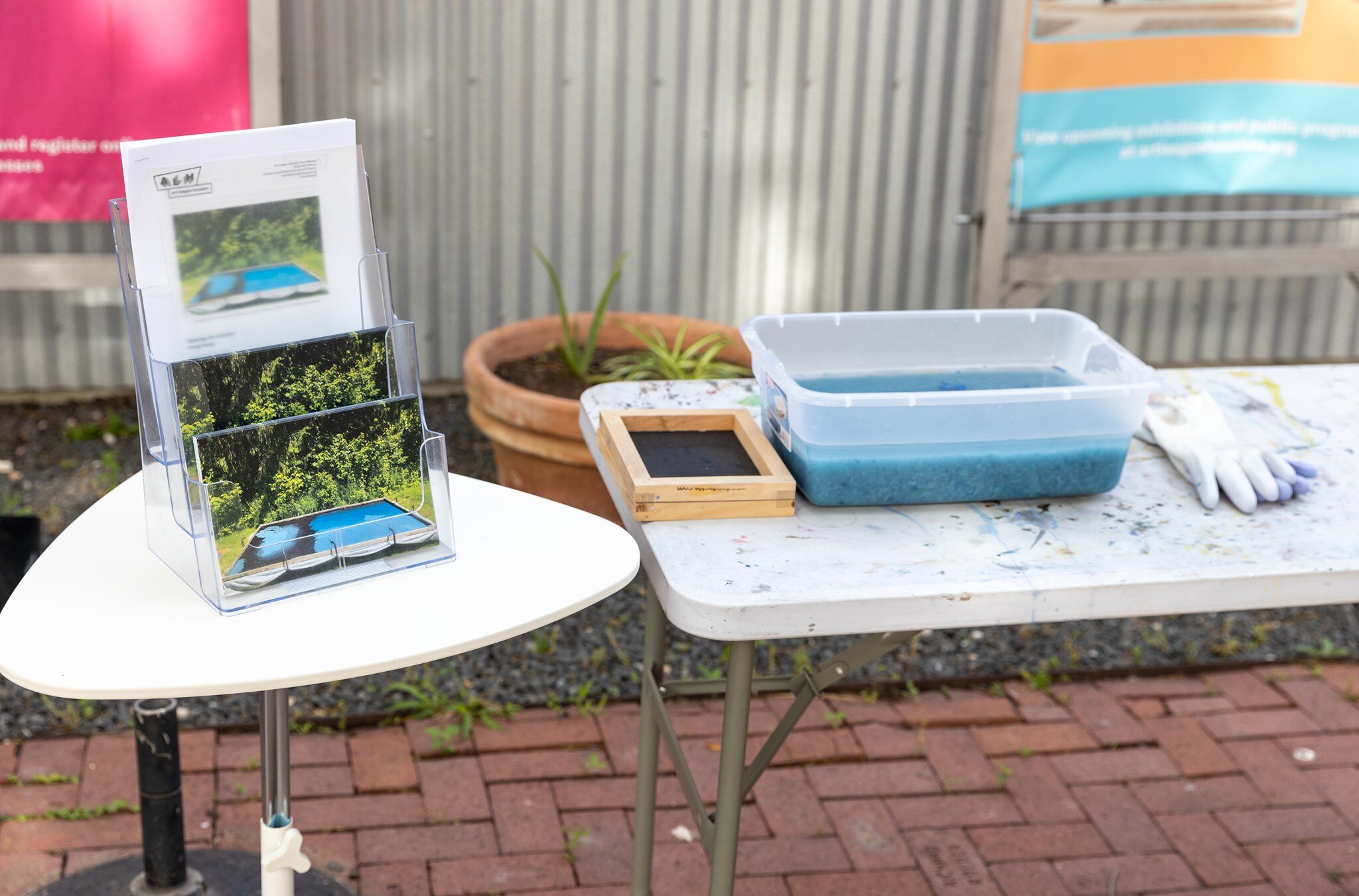

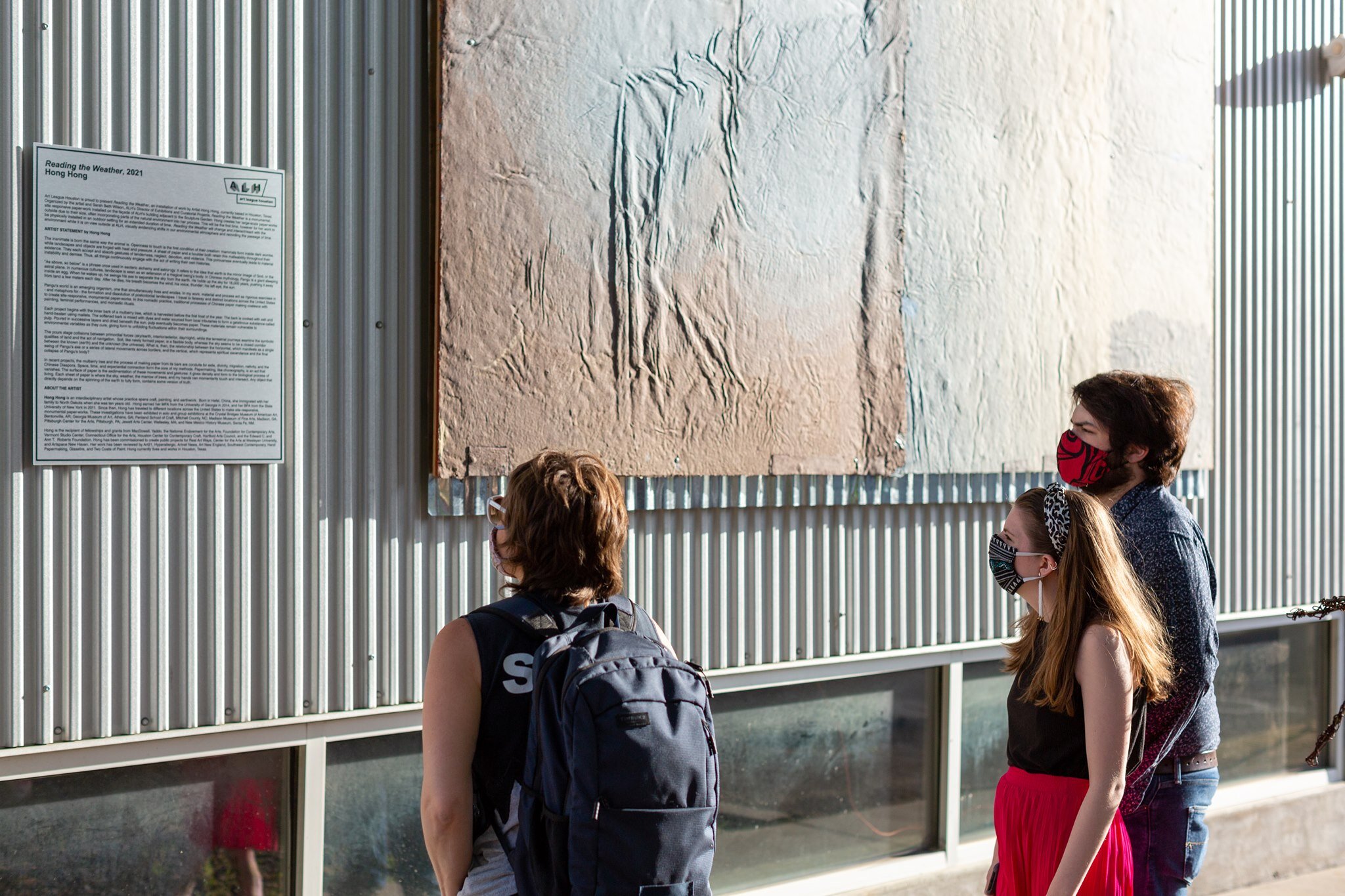
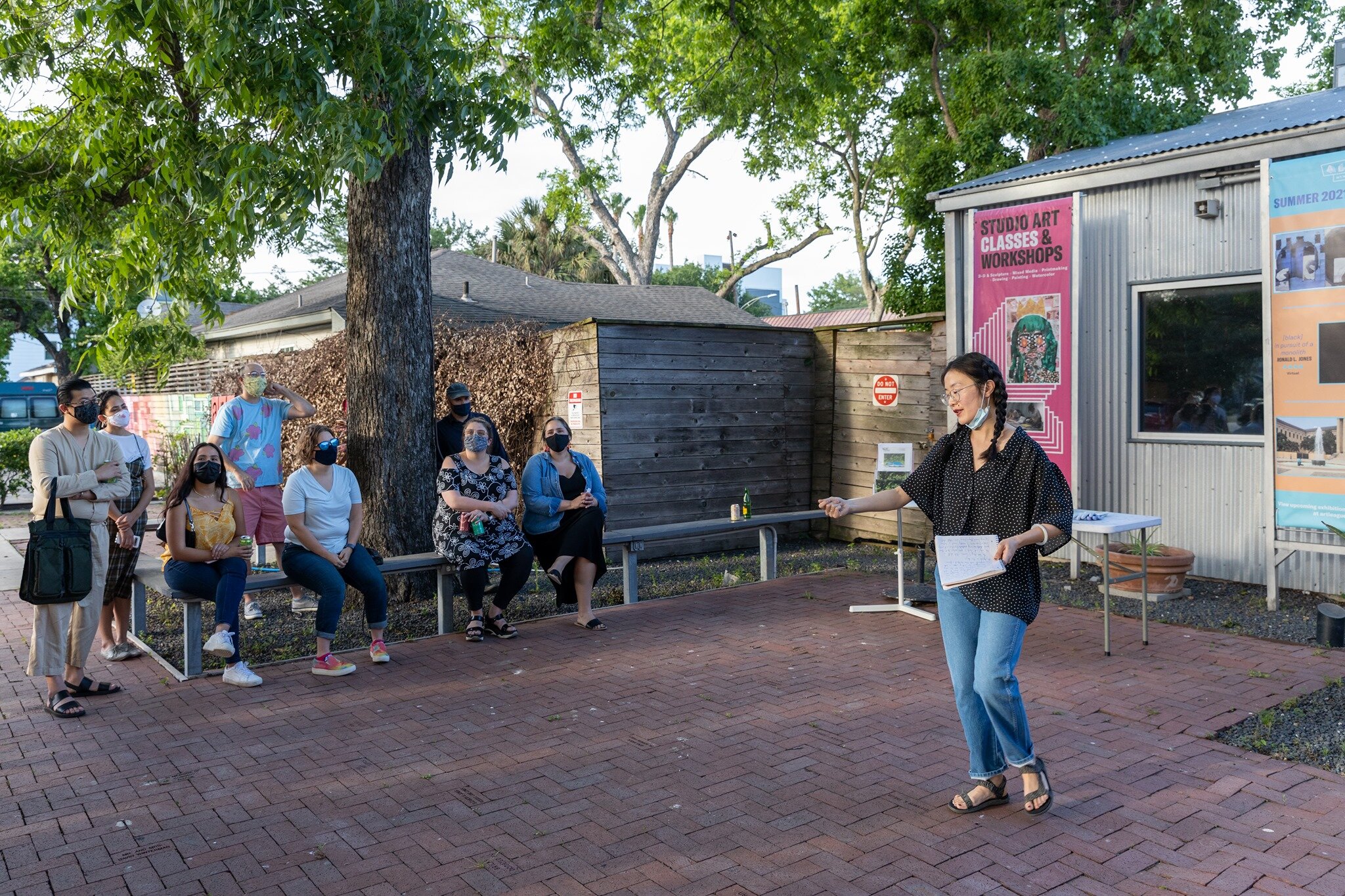
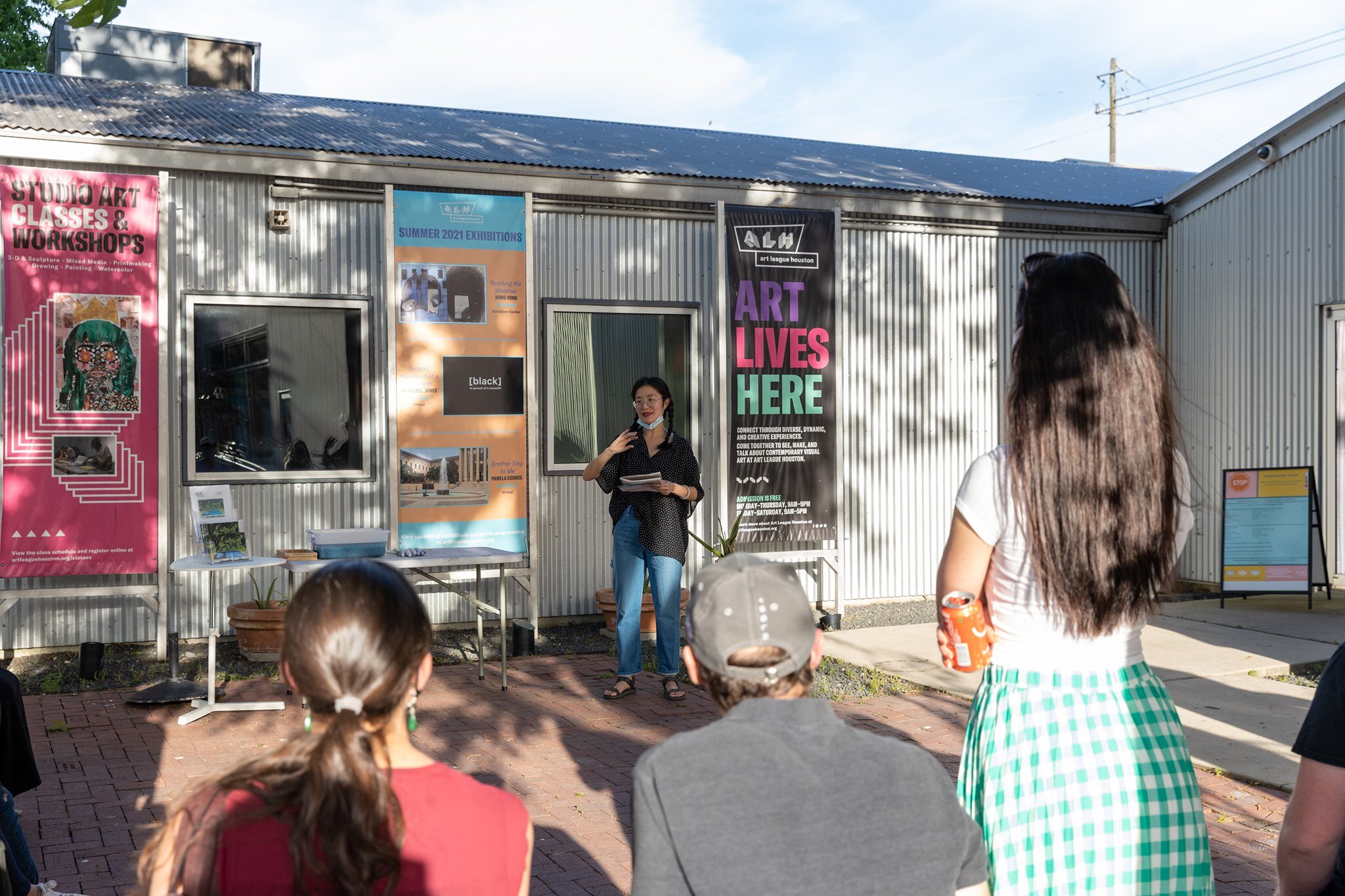
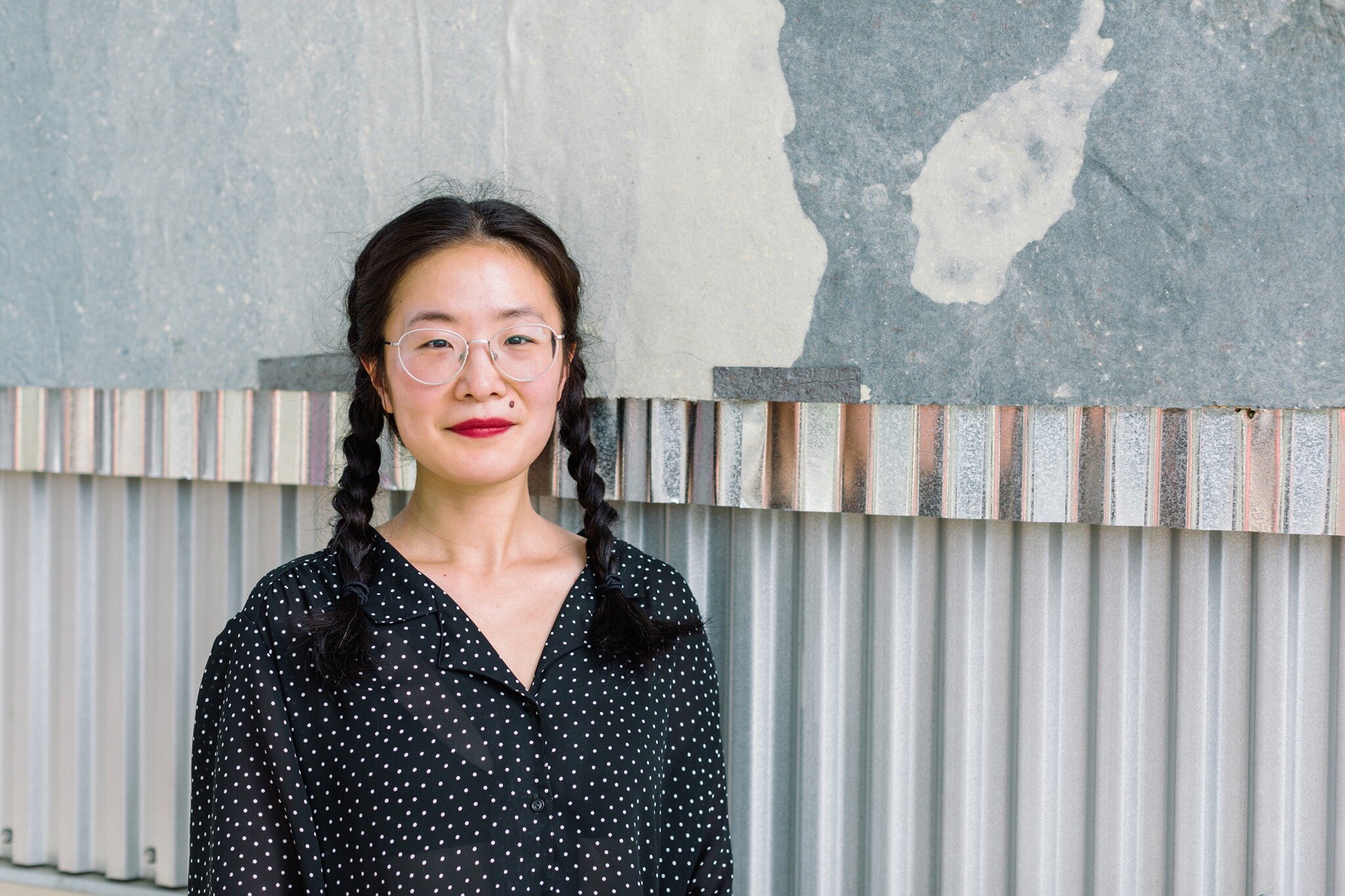

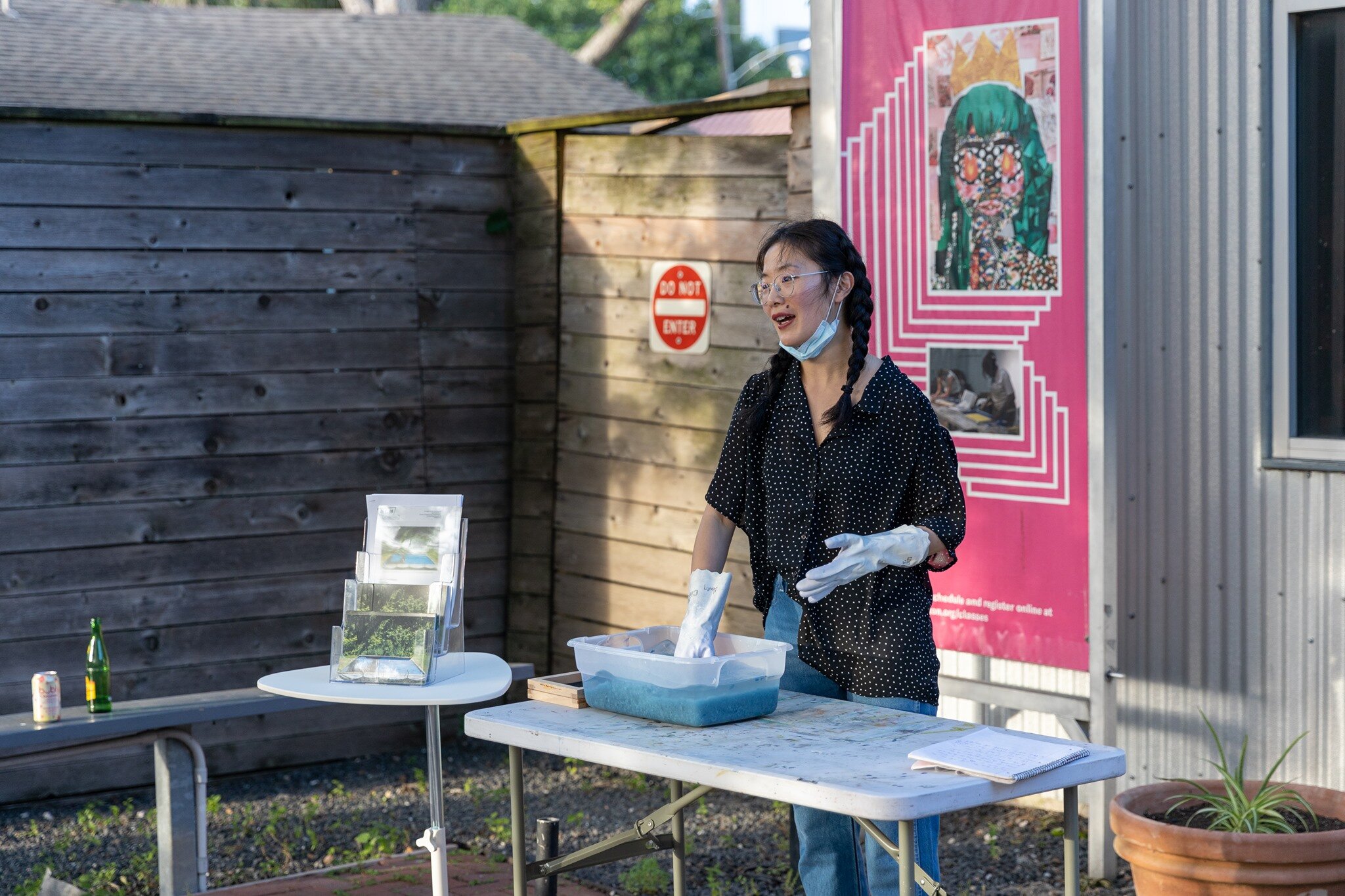
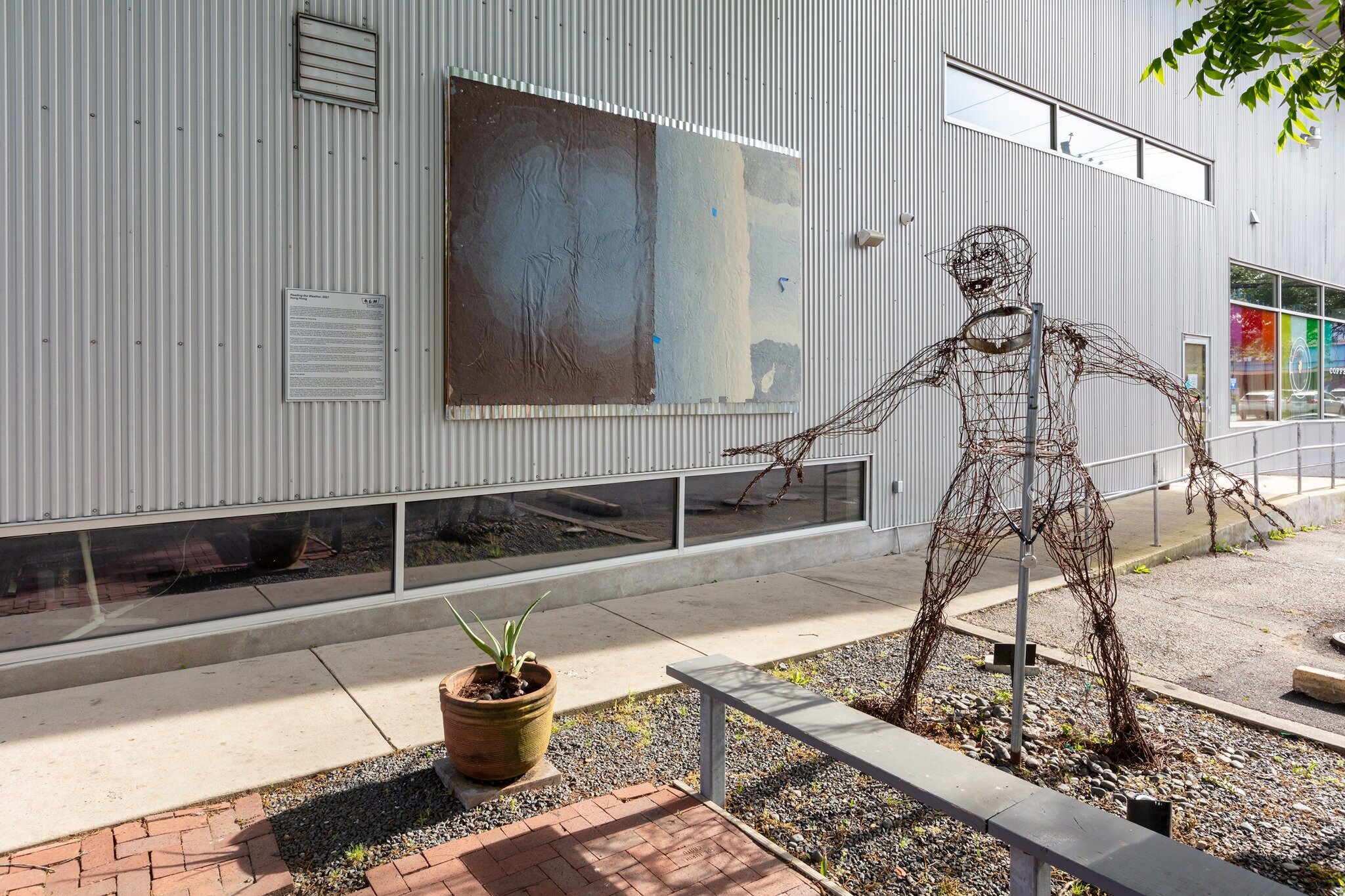


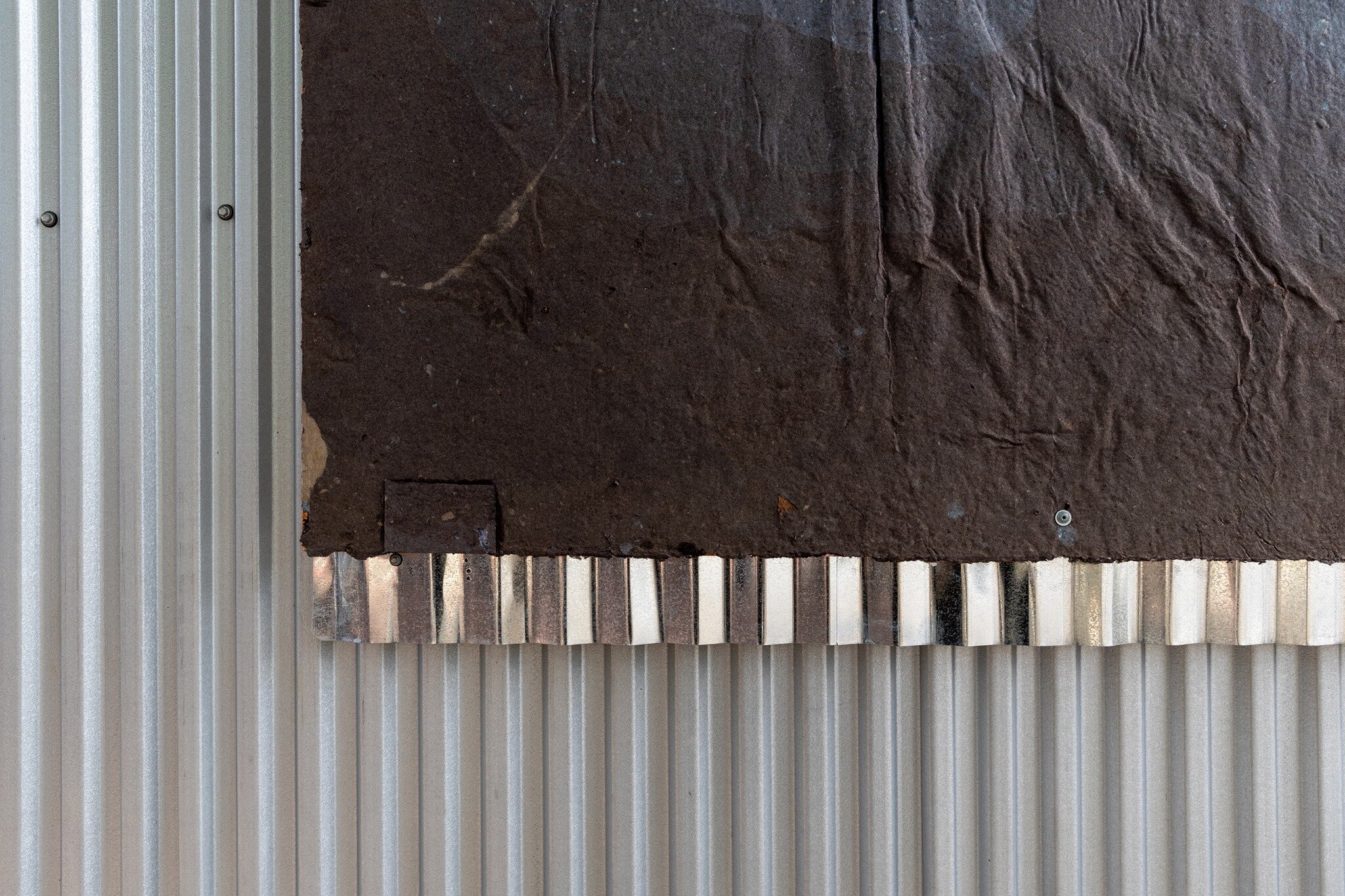
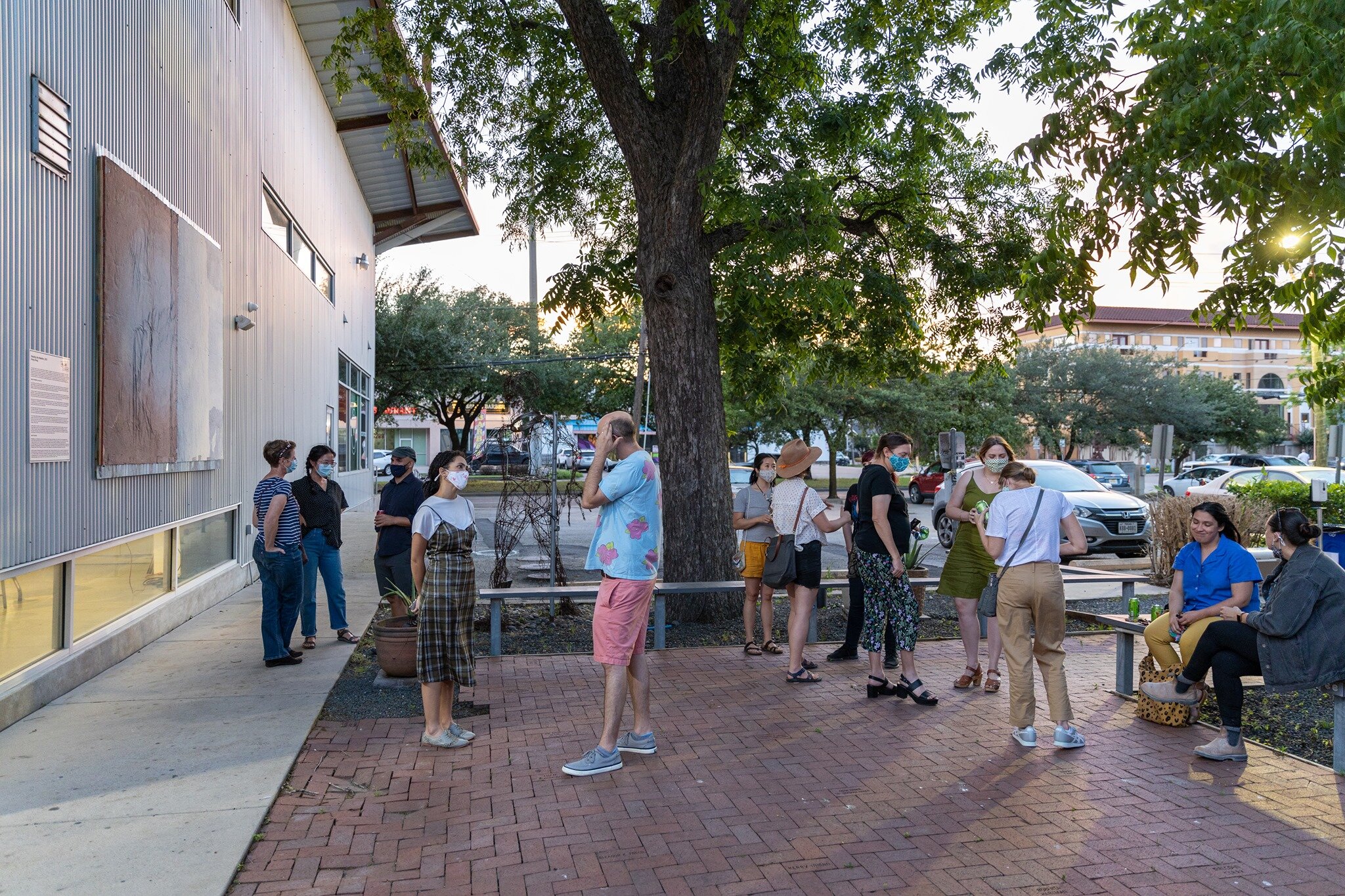
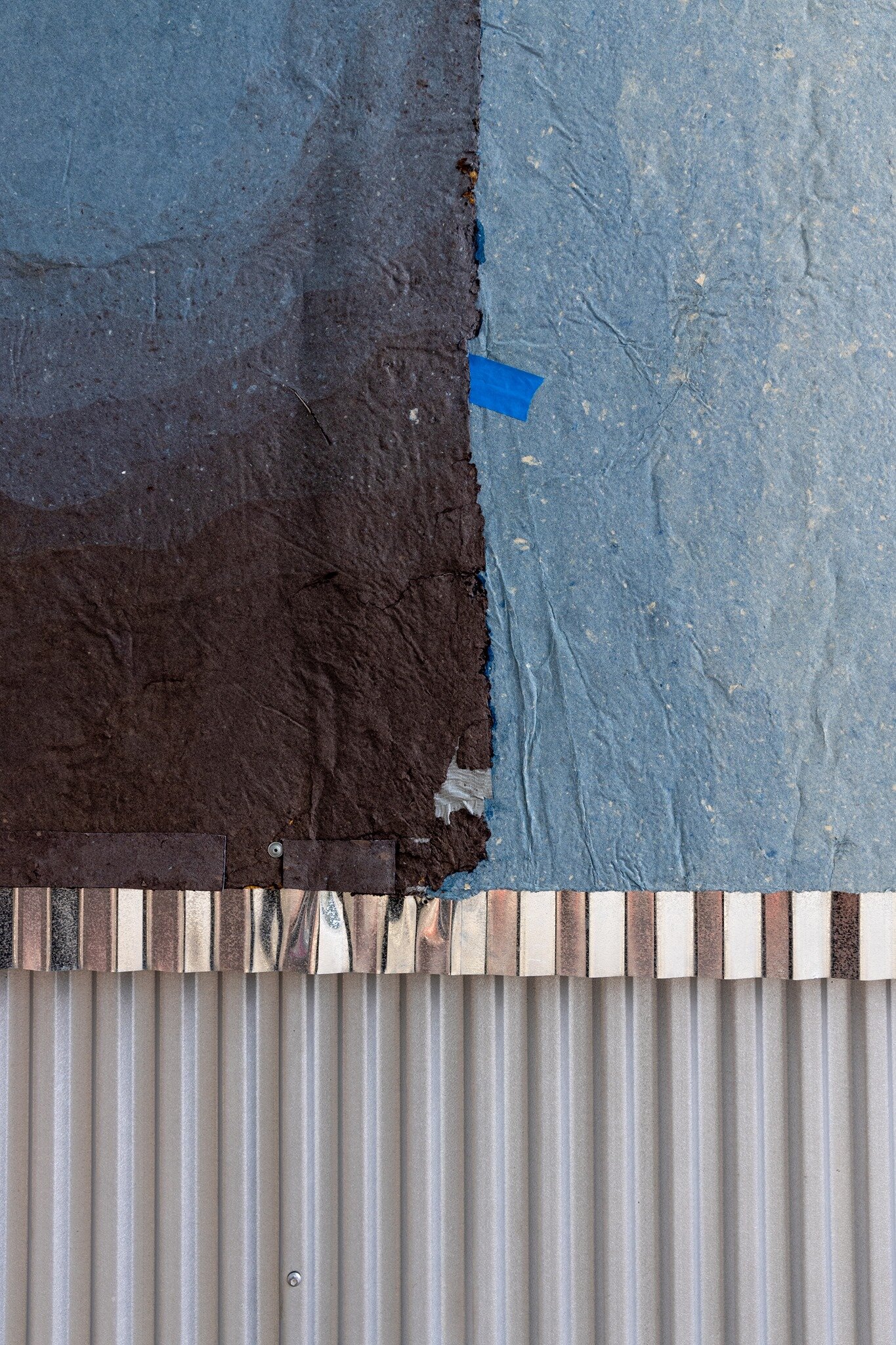
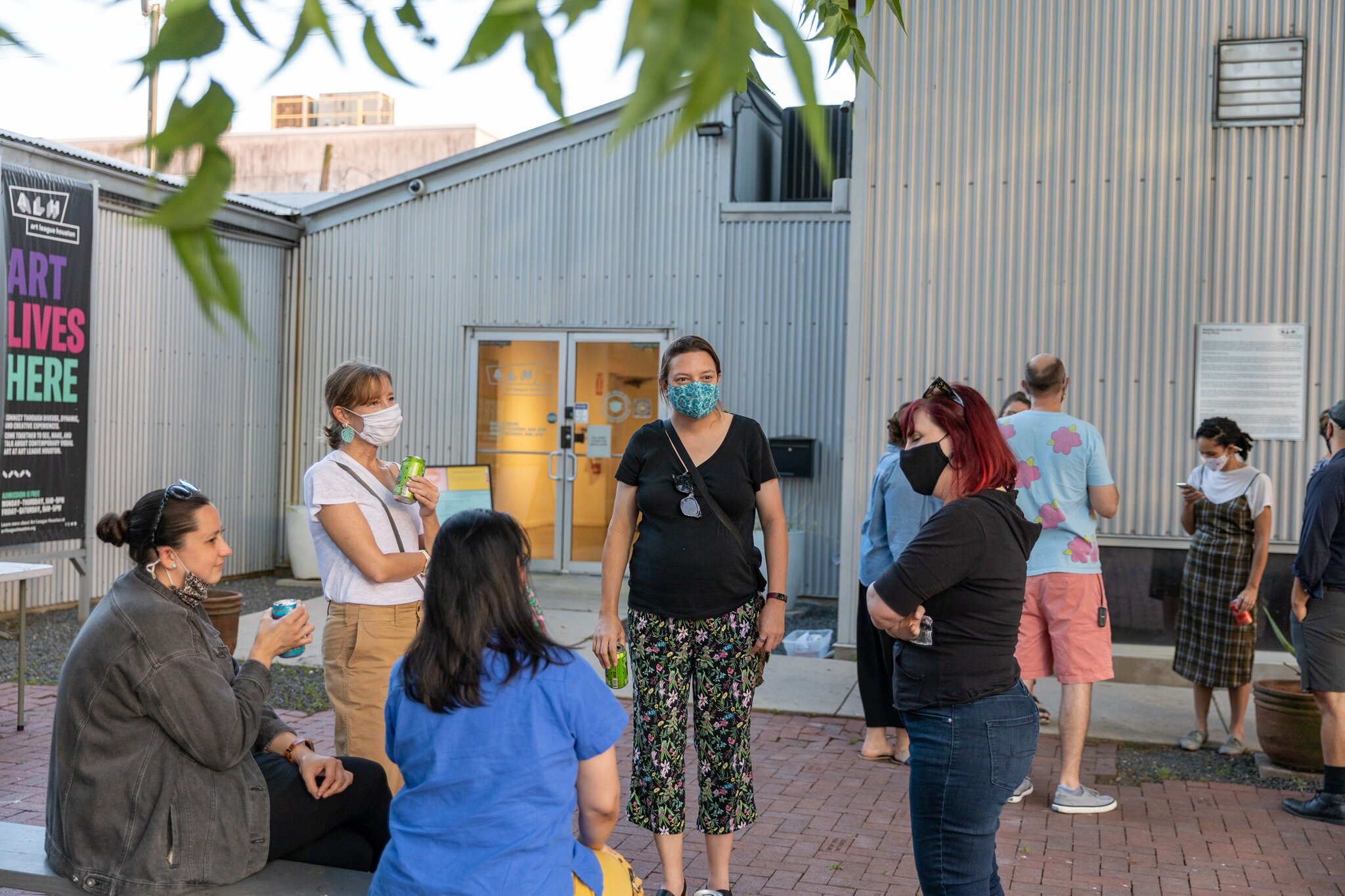
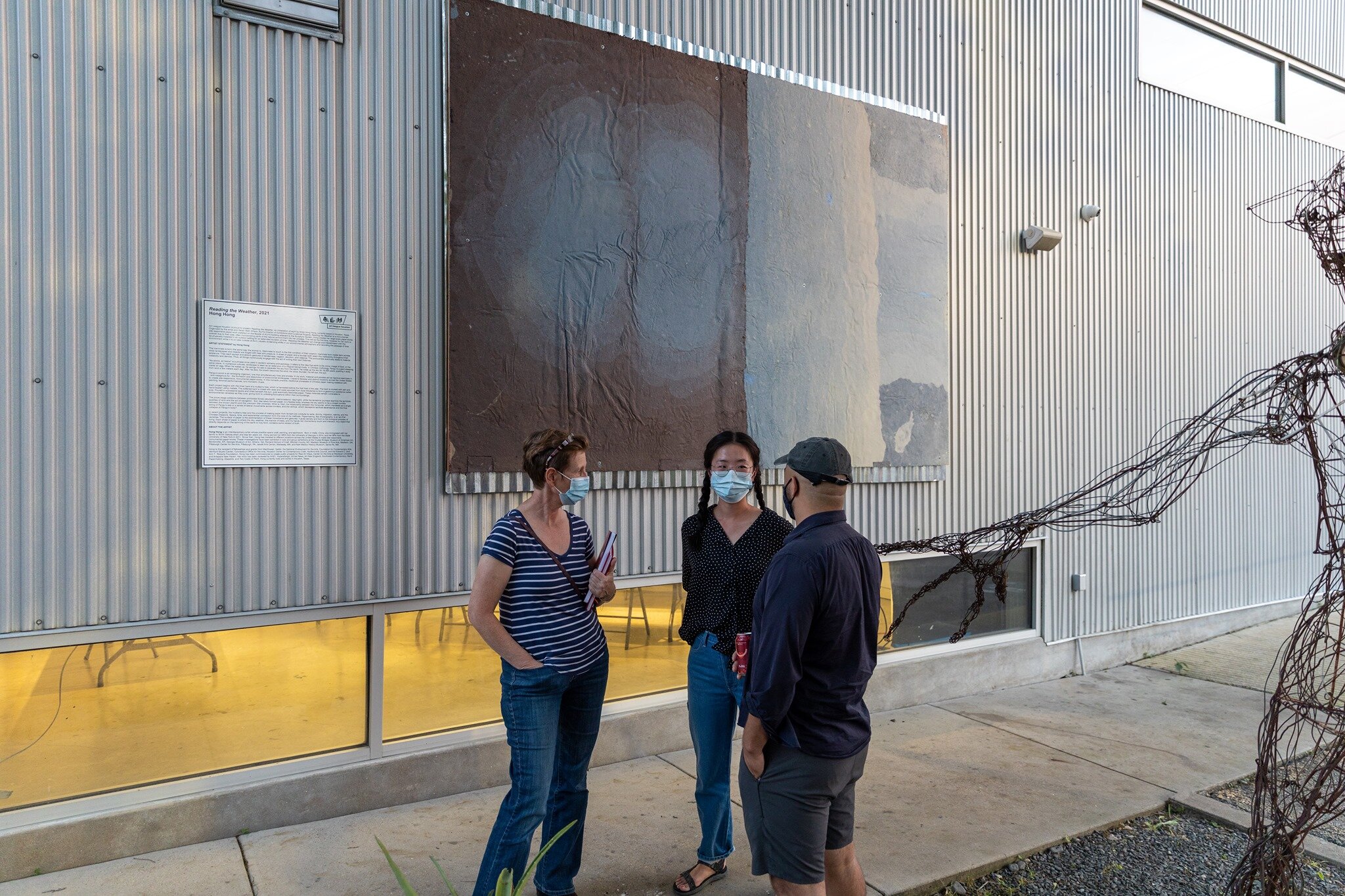
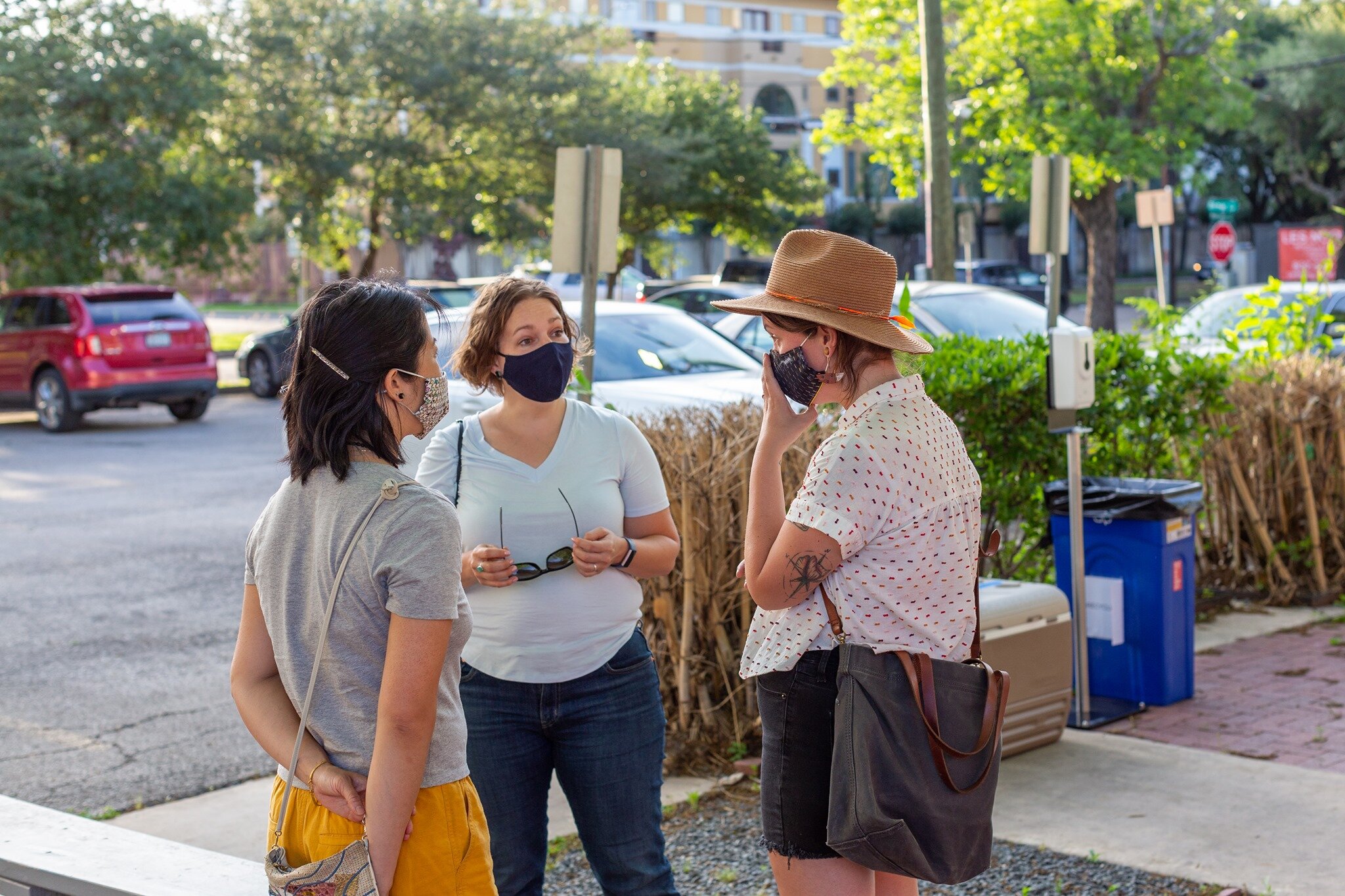

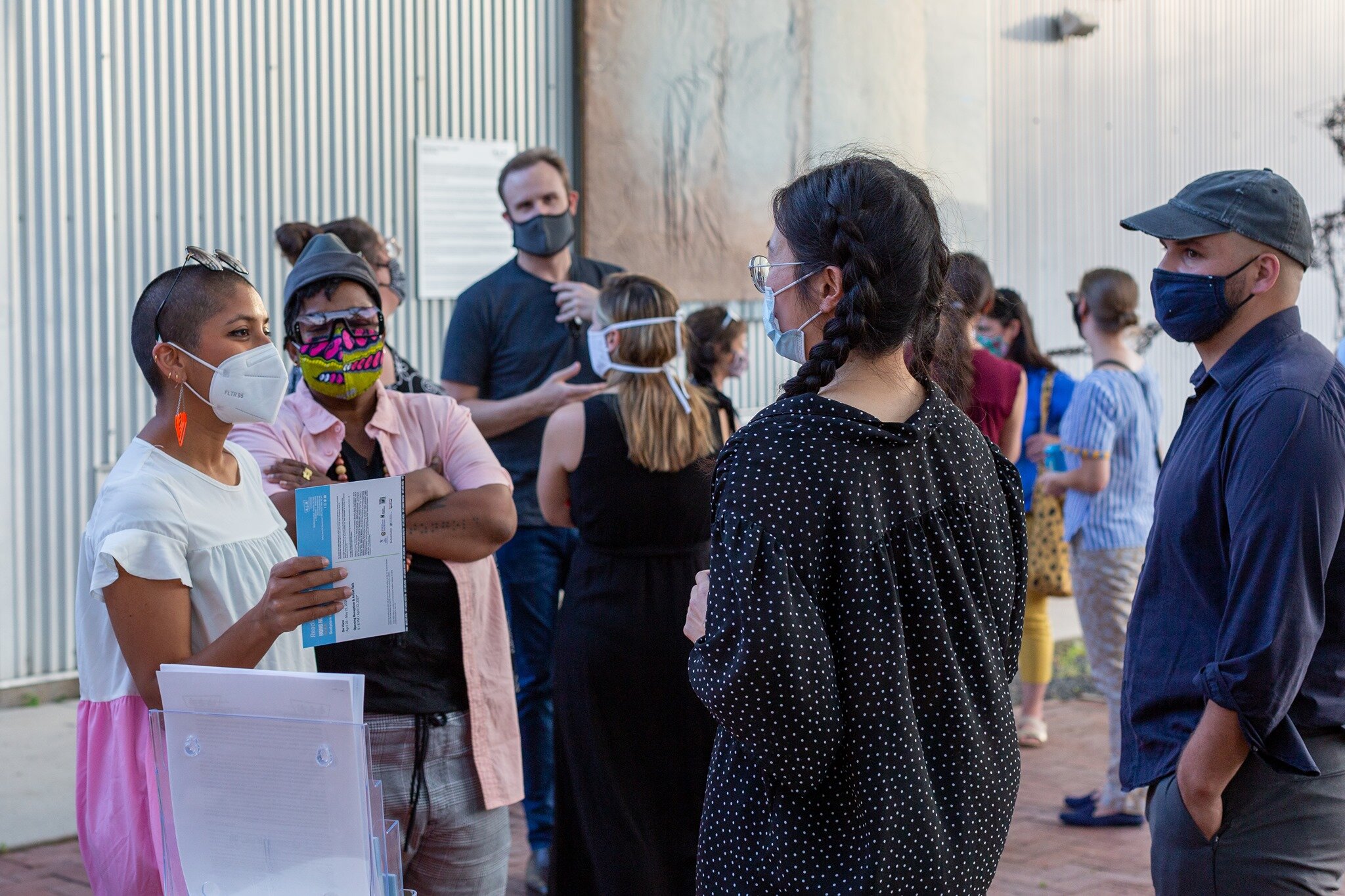
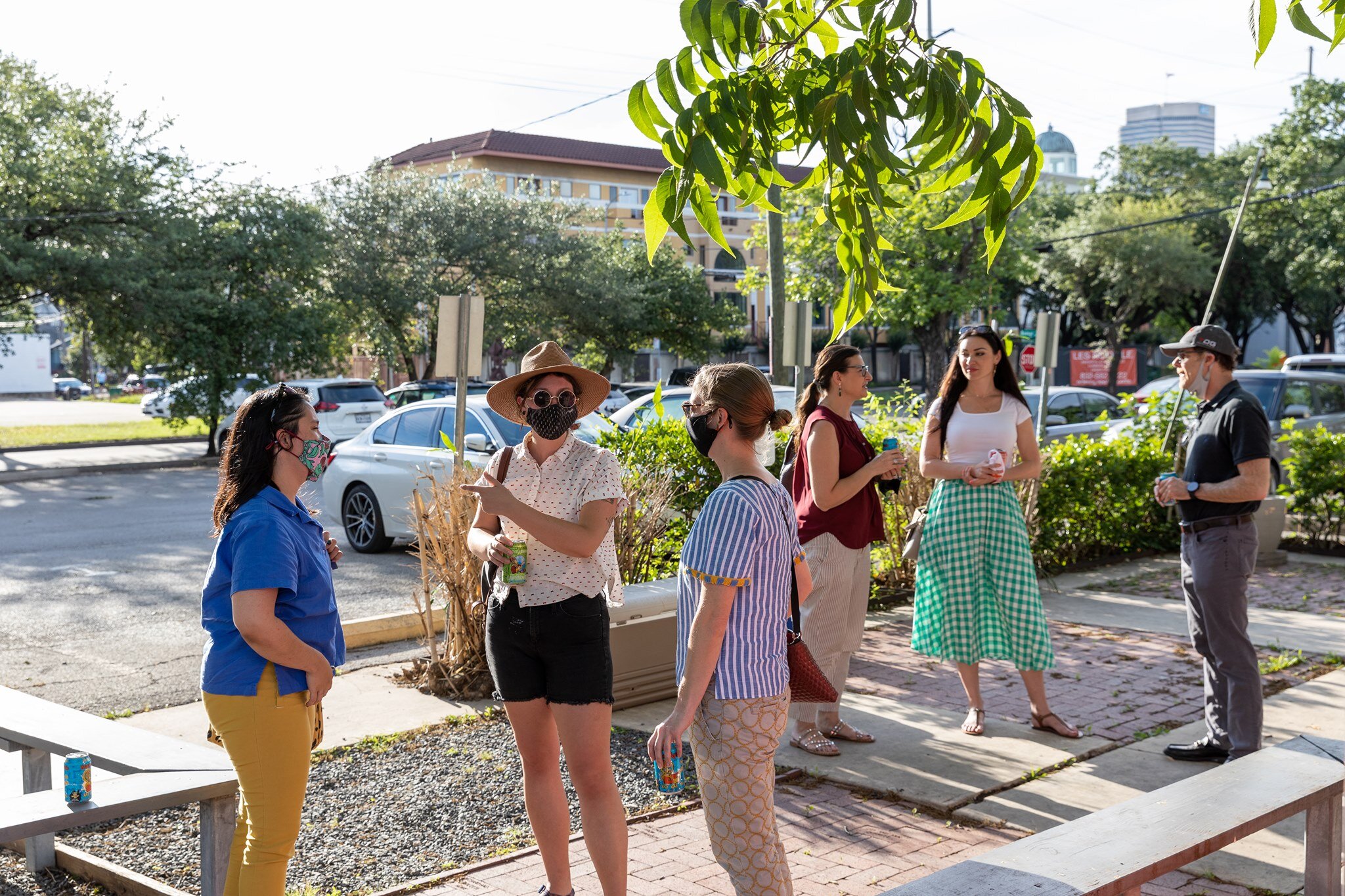
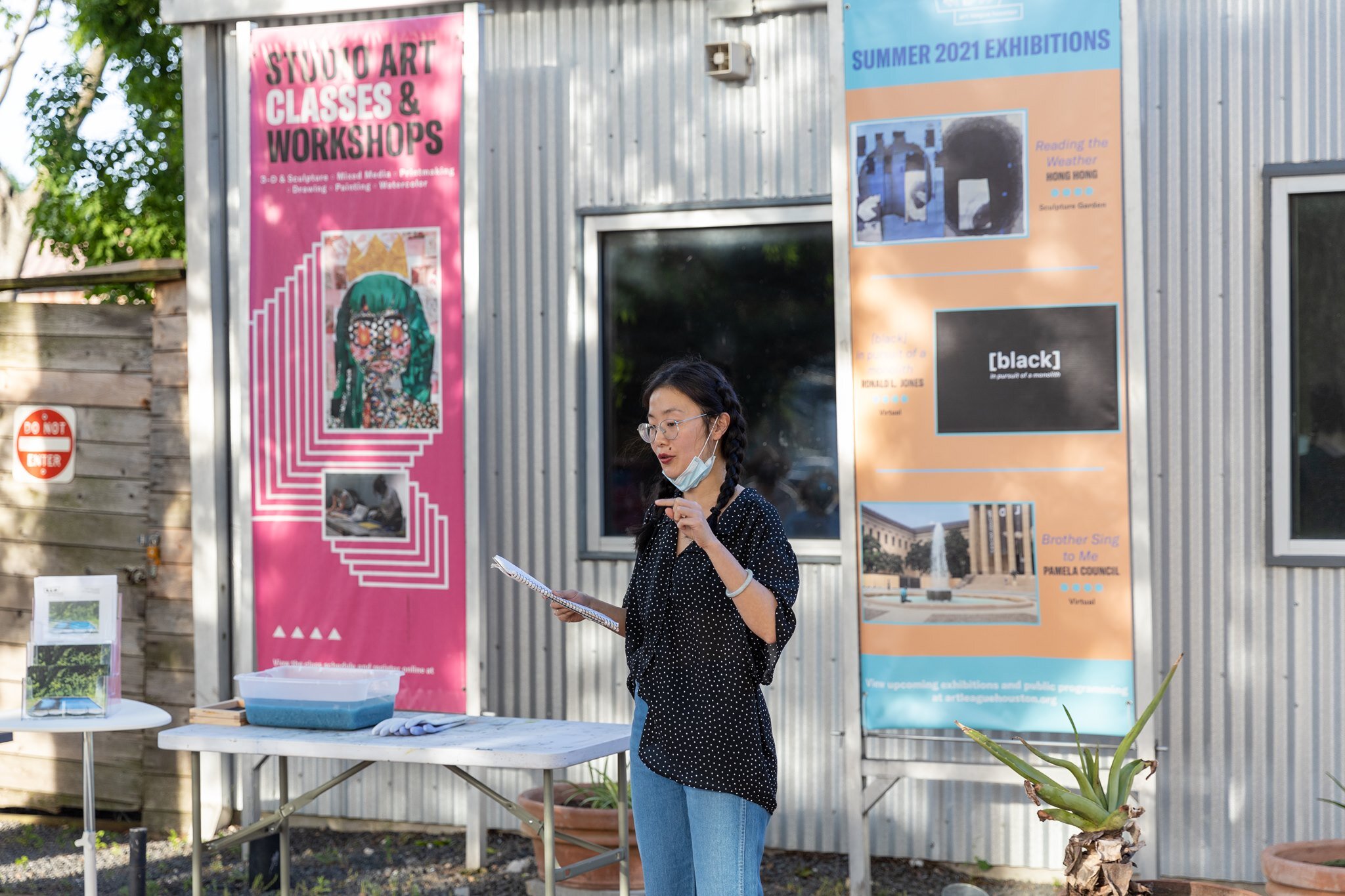
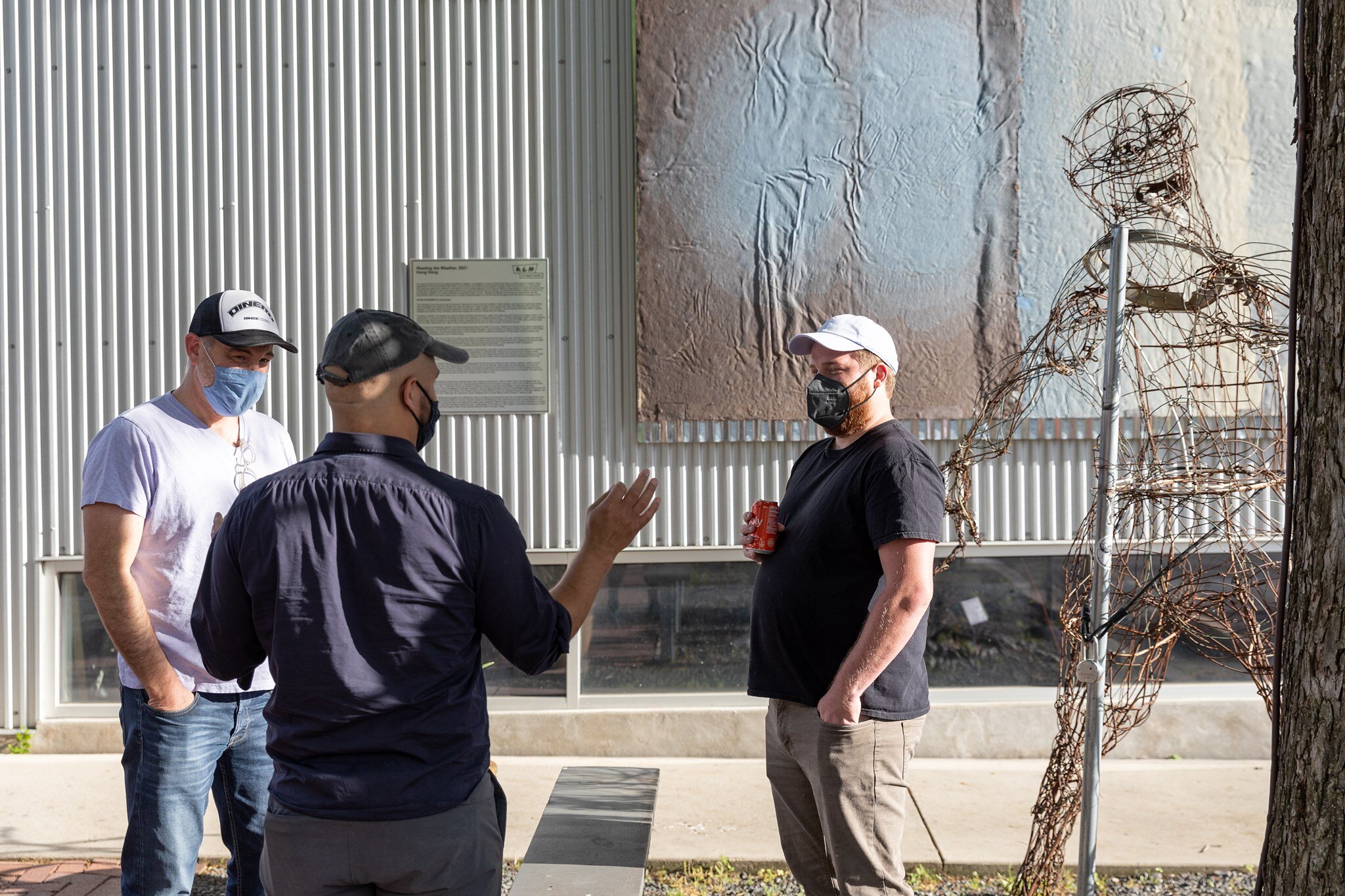
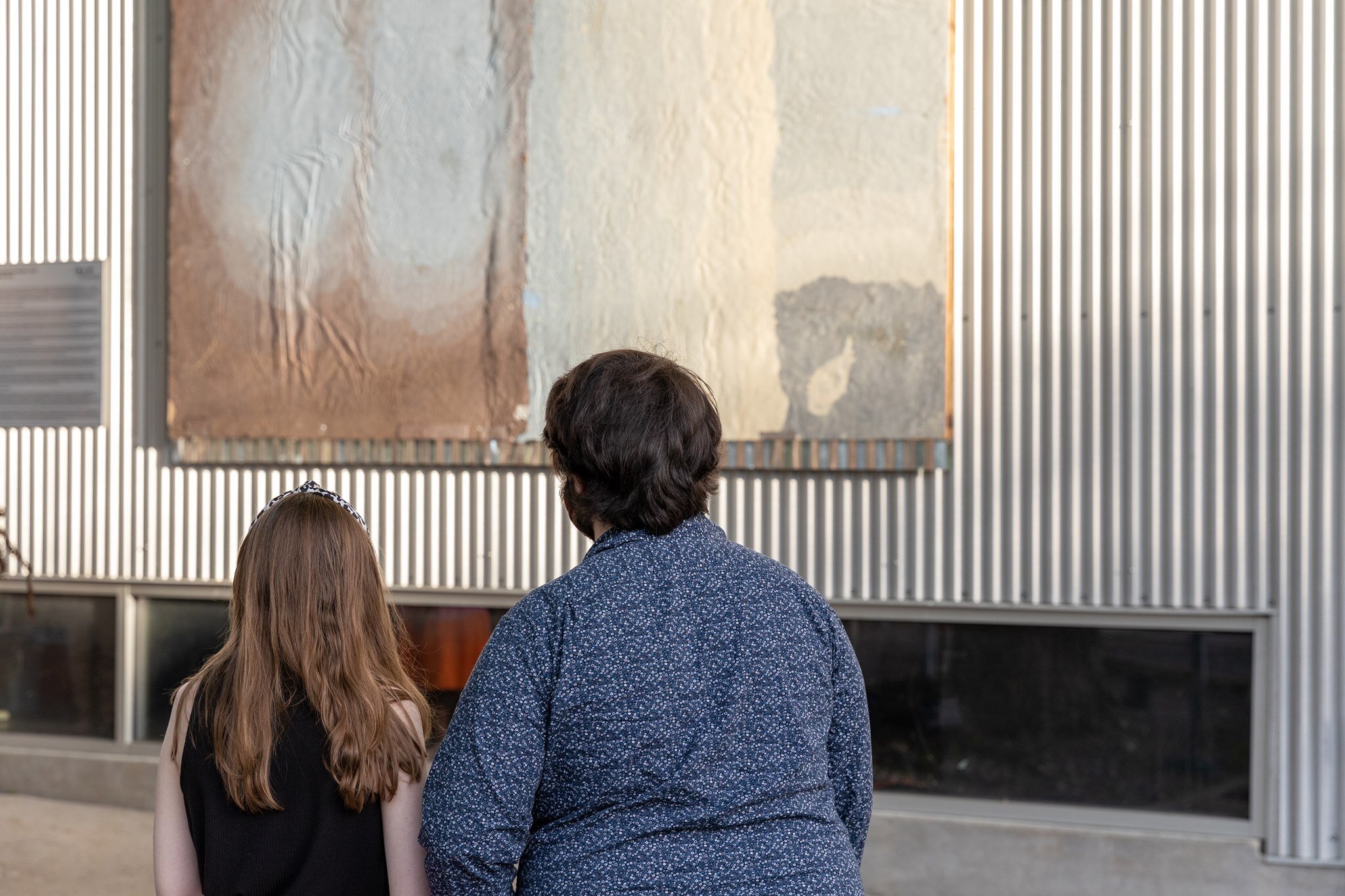

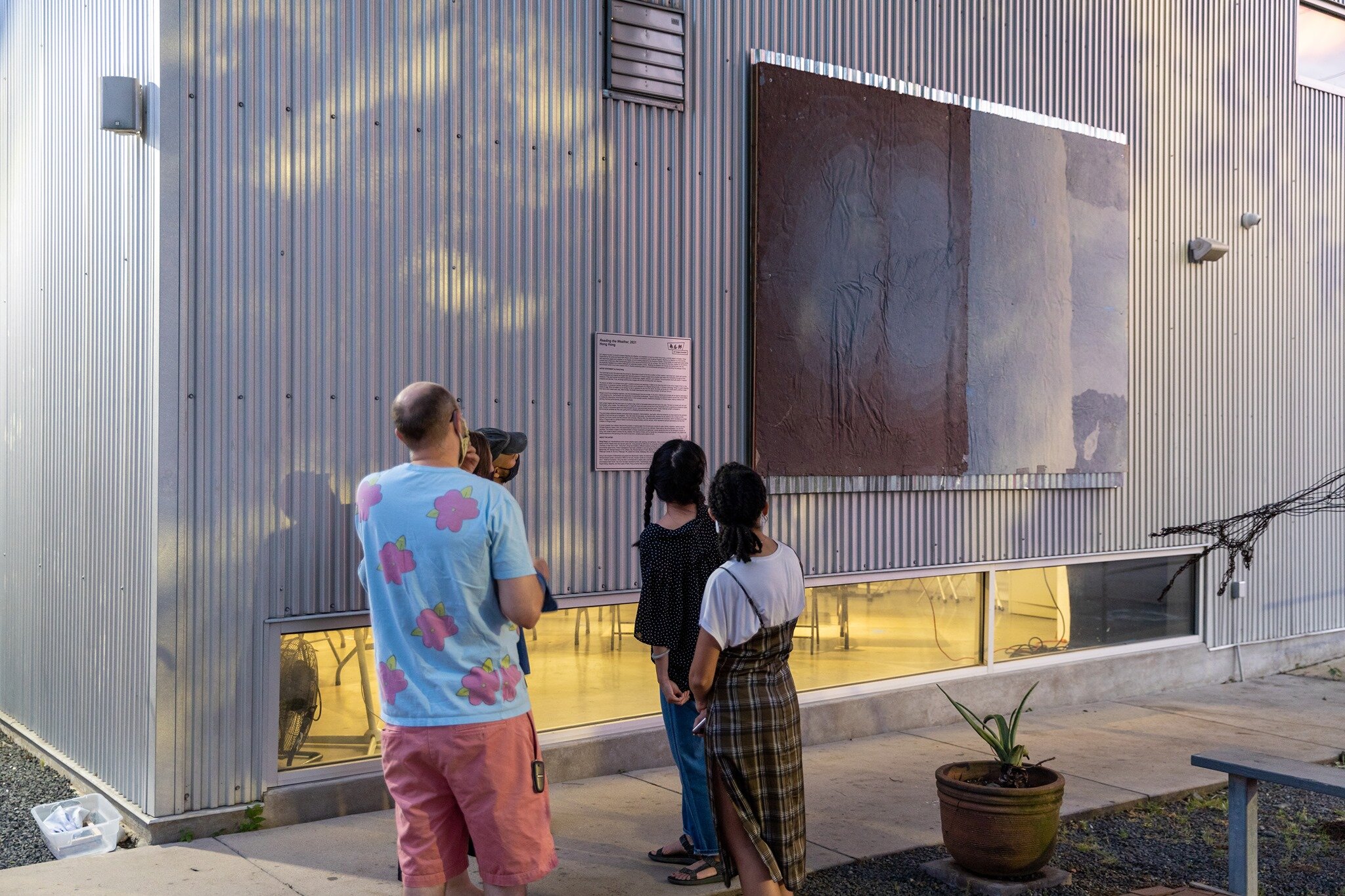
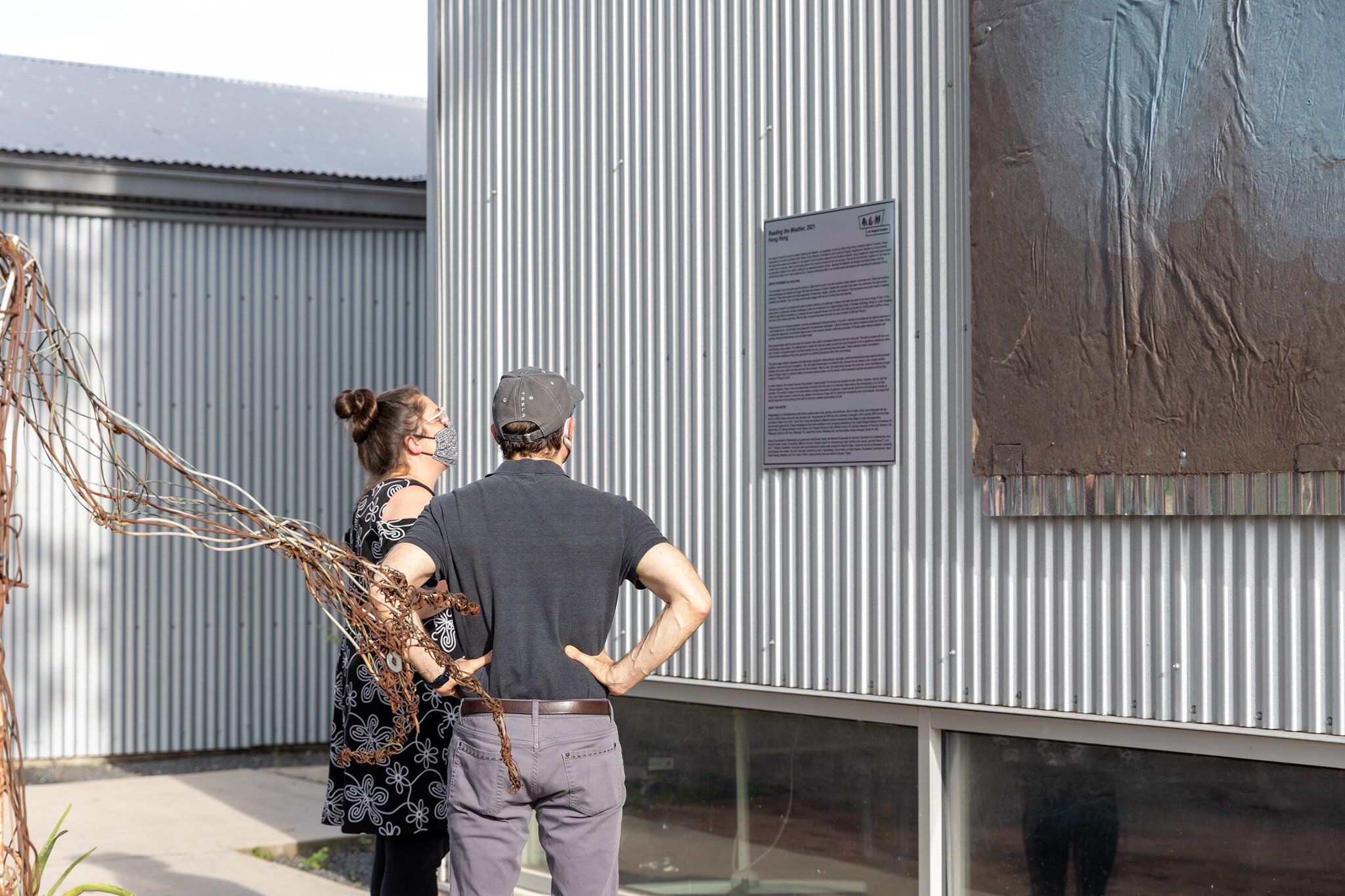
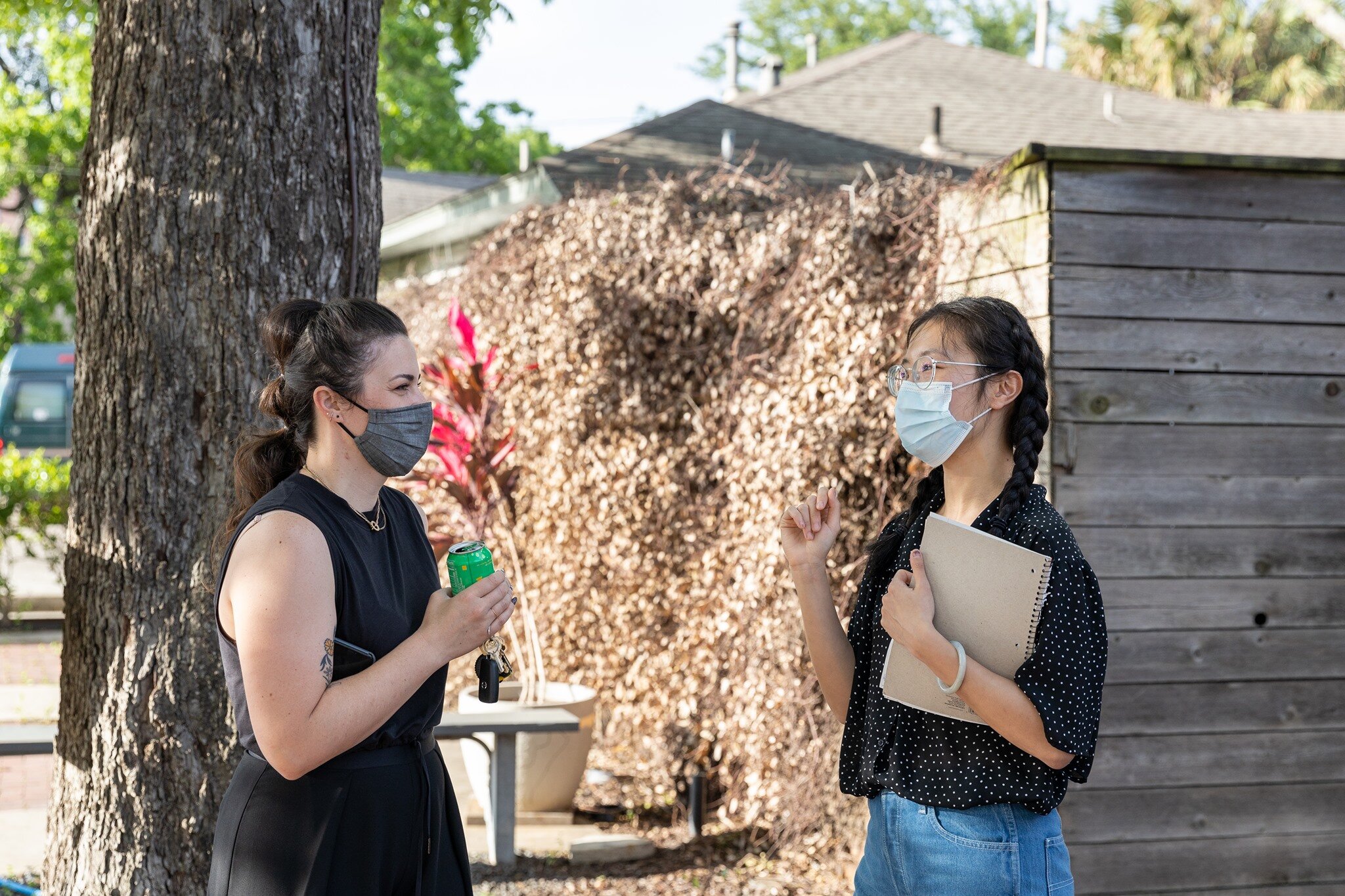
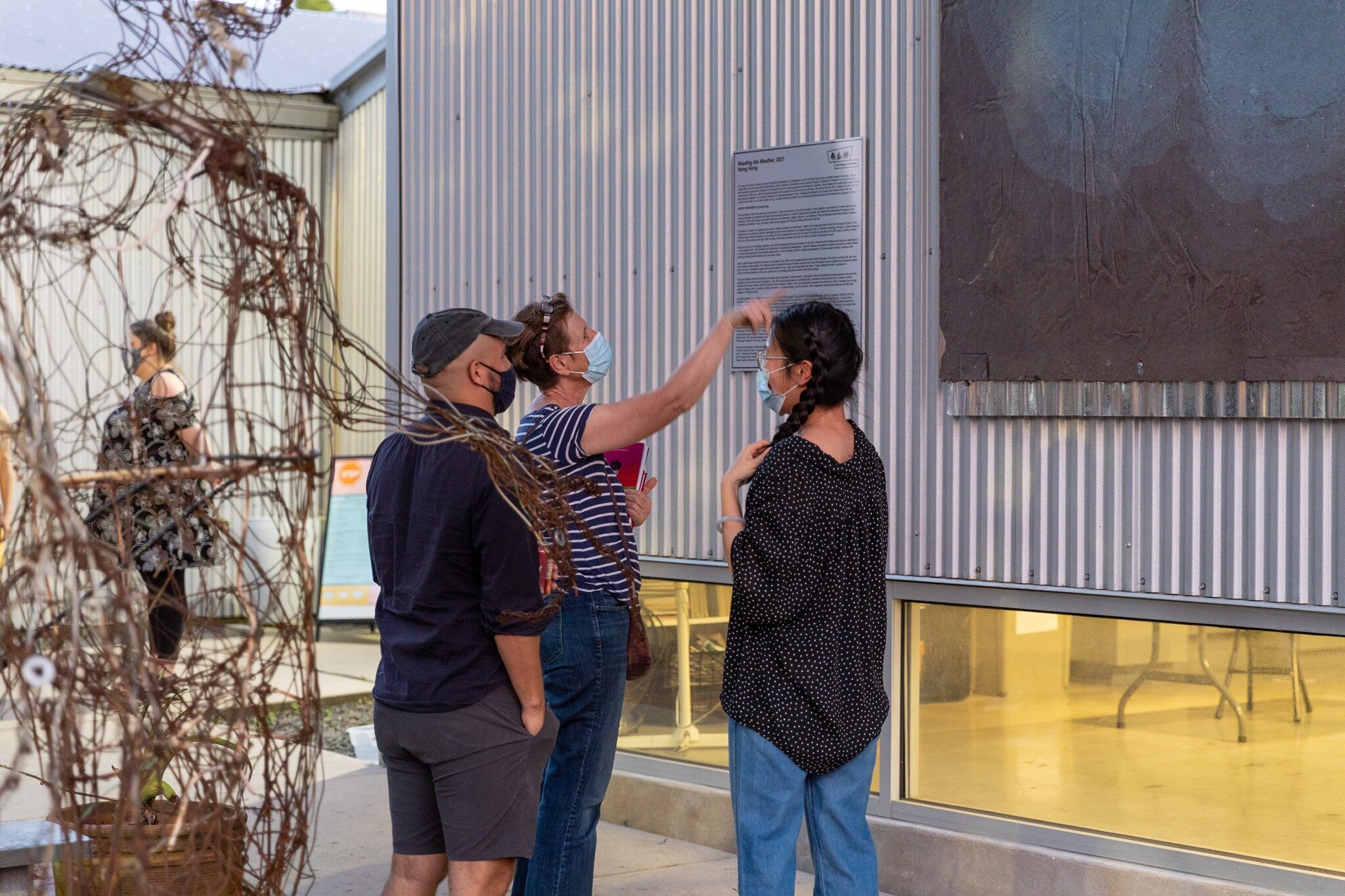
Reading the Weather
Hong Hong
On View: April 23, 2021 I ALH Sculpture Garden Opening Reception: 6-8 PM, Friday, May 7, 2021 I ALH Sculpture Garden* Artist Talk: 6:30 PM, Friday, May 7, 2021 I ALH Sculpture Garden*
*Opening reception will be in-person and outdoors at the ALH Sculpture Garden. Masks and social distancing required.
Press: Houstonia - Take a Closer Look at Hong Hong’s Textural Masterpieces
Art League Houston (ALH) is proud to present Reading the Weather, an installation of work by Artist Hong Hong, currently based in Houston, Texas. Organized by the artist and Sarah Beth Wilson, ALH’s Director of Exhibitions and Curatorial Projects, Reading the Weather is a monumental, site responsive paper-work installed on the façade of ALH’s building adjacent to the Sculpture Garden. Hong creates her large-scale paper-works outside due to their size, often incorporating parts of the natural environment into her process. This will be the first time, however, for her work to be physically installed in an outdoor setting for an extended duration of time. Reading the Weather will change and interact/react with the environment while it is on view outside at ALH, visually evidencing shifts in our environmental atmosphere and recording the passage of time.
EXHIBITION STATEMENT by Hong Hong
One.
Two nights ago, I was standing outside with V. V is an artist. I love her work, but we are still strangers to each other. It’s possible that I simultaneously know her and don’t know her at all. She asked quite suddenly, “What am I supposed to do with beauty?”. Then, it started to rain. The drops were big and gentle. They smelled like handfuls of warm dust. There was so much to say and no right ways to say it. Is it time? Is it indecision? Is it language’s inability to circumscribe experience? Or is it simply my own cowardice?
Two.
Sarah and I first met in my studio last fall, after I moved to Texas to complete a yearlong fellowship at the Houston Center for Contemporary Craft. We sat in front of a project that I made outside in the garden. Somewhere in my head, there was that poem about roses. There are these roses, after rain. She wants them. He doesn’t. He protests, saying that they are beautiful where they are. We were all beautiful once, she says and cuts them anyway.
Three.
I remember the drive from Connecticut towards the Gulf. There was the blue largeness of the sky, which seemed to become bluer and stretch further into the distance with every passing mile. M is an artist. I loved her work first. And with time, we became more than strangers to each other. During one of our conversations, she asked me to consider the instability of pigment. M, I miss you and this is what I would like to say to you now: color, like existence, is improvisational choreography. It is an act that is always vanishing.
Four.
In recent work, dyes are not sealed with a mordant. Colors fade from direct contact with lights and the sun. We are putting up one or two pieces on the exterior walls of Art League Houston, where it will be exposed to the elements. I’m hoping that it will move from saturation to grayscale. This project is called Reading the Weather. It is an attempt to record, cartographically and through abstraction, the complex conditions (meteorological, temporal, social, individual) that make possible each object’s conception, formulation, and disappearance.
Five.
V, I don’t really know what beauty is. But I used to play hide and seek with the moon when I was a child. This was it, I want to say to you, and maybe that is all.
There were the roses, in the rain. Don’t cut them, I pleaded. They won’t last, she said. But they’re so beautiful where they are. Agh, we were all beautiful once, she said, and cut them and gave them to me in my hand.
-The Act, William Carlos Williams
ARTIST STATEMENT by Hong Hong
The inanimate is born the same way the animal is. Openness to touch is the first condition of their creation: mammals form inside dark wombs, while landscapes and objects are forged with heat and pressure. A sheet of paper and a boulder both retain this malleability throughout their existence. They each accept and absorb gestures of tenderness, neglect, devotion, and violence. This porousness eventually leads to material instability and demise. Thus, all things continuously engage with the act of writing their own histories.
“As above, so below” is a phrase once used in esoteric alchemy and astrology. It refers to the idea that earth is the mirror image of God, or the astral plane. In numerous cultures, landscape is seen as an extension of a magical being’s body. In Chinese mythology, Pangu is a giant sleeping inside an egg. When he wakes up, he swings his axe to separate the sky from the earth. He holds up the sky for 18,000 years, pushing it away from land a few meters each day. After he dies, his breath becomes the wind; his voice, thunder; his left eye, the sun.
Pangu’s world is an emerging organism, one that simultaneously lives and erodes. In my work, material and process act as rigorous exercises in – and metaphors for – the formation and dissolution of postcolonial landscapes. I travel to faraway and distinct locations across the United States to create site-responsive, monumental paper-works. In this nomadic practice, traditional processes of Chinese papermaking coalesce with painting, feminist performances, and monastic rituals.
Each project begins with the inner bark of a mulberry tree, which is harvested before the first frost of the year. The bark is cooked with ash and hand-beaten using mallets. The softened bark is mixed with dyes and water sourced from local tributaries to form a gelatinous substance called pulp. Poured in successive layers and dried beneath the sun, pulp eventually becomes paper. These materials remain vulnerable to environmental variables as they cure, giving form to unfolding fluctuations within their surroundings.
The pours stage collisions between primordial forces (sky/earth, interior/exterior, day/night), while the terrestrial journeys examine the symbolic qualities of land and the act of navigation. Soil, like newly formed paper, is a flexible body, whereas the sky seems to be a closed corridor between the known (earth) and the unknown (the universe). What is, then, the relationship between the horizontal, which manifests as a single swing of Pangu’s axe or a series of lateral movements across borders, and the vertical, which represents spiritual ascendance and the final collapse of Pangu’s body?
In recent projects, the mulberry tree and the process of making paper from its bark are conduits for exile, divinity, migration, nativity, and the Chinese Diaspora. Space, time, and experiential connection form the core of my methods. Papermaking, like choreography, is an act that vanishes. The surface of paper is the sedimentation of these movements and gestures: it gives density and form to the biological process of living. Each sheet of paper is where the sky, weather, the marrow of trees, and my hands can momentarily touch and intersect. Any object that directly depends on the spinning of the earth to fully form, contains some version of truth.
ABOUT THE ARTIST
Hong Hong is an interdisciplinary artist whose practice spans craft, painting, and earthwork. Born in Hefei, China, she immigrated with her family to North Dakota when she was ten years old. Hong earned her MFA from the University of Georgia in 2014, and her BFA from the State University of New York in 2011. Since then, Hong has traveled to different locations across the United States to make site-responsive, monumental paper-works. These investigations have been exhibited in solo and group exhibitions at the Crystal Bridges Museum of American Art, Bentonville, AR; Georgia Museum of Art, Athens, GA; Penland School of Craft, Mitchell County, NC; Madison Museum of Fine Arts, Madison, GA; Pittsburgh Center for the Arts, Pittsburgh, PA; Jewett Arts Center, Wellesley, MA; and New Mexico History Museum, Santa Fe, NM.
Hong is the recipient of fellowships and grants from MacDowell, Yaddo, the National Endowment for the Arts, Foundation for Contemporary Arts, Vermont Studio Center, Connecticut Office for the Arts, Houston Center for Contemporary Craft, Hartford Arts Council, and the Edward C. and Ann T. Roberts Foundation. Hong has been commissioned to create public projects for Real Art Ways, Center for the Arts at Wesleyan University, and Artspace New Haven. Her work has been reviewed by Art21, Hyperallergic, Artnet News, Art New England, Southwest Contemporary, Hand Papermaking, Glasstire, and Two Coats of Paint. Hong currently lives and works in Houston, Texas.
ADDITIONAL WORKS ON VIEW IN HOUSTON
We invite you to visit, either in-person or through their websites, the Houston Center for Contemporary Craft where Hong Hong began a residency in 2020, and Asia Society Texas where her exhibition, The Mountain That Does Not Describe a Circle: Works by Hong Hong, is on view through July 25, 2021.
Be sure to experience Hong Hong’s work in Houston this summer and make plans to join Asia Society Texas for their virtual conversation with the artist discussing her exhibition and artistic practice at 7 p.m. on Tuesday, May 18, 2021.
The Houston Asian American Archive at Rice University held an interview with Hong Hong for their Oral History Collection. You can watch the interview on their YouTube.
Please share your experience with us: @honghongstudio @artleaguehouston #artleaguehouston



